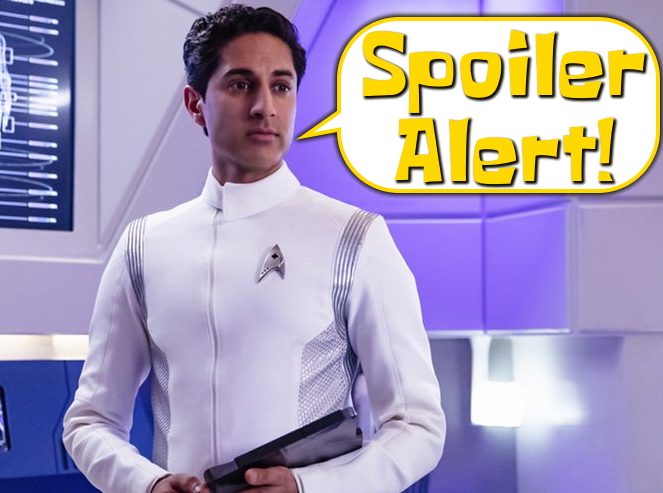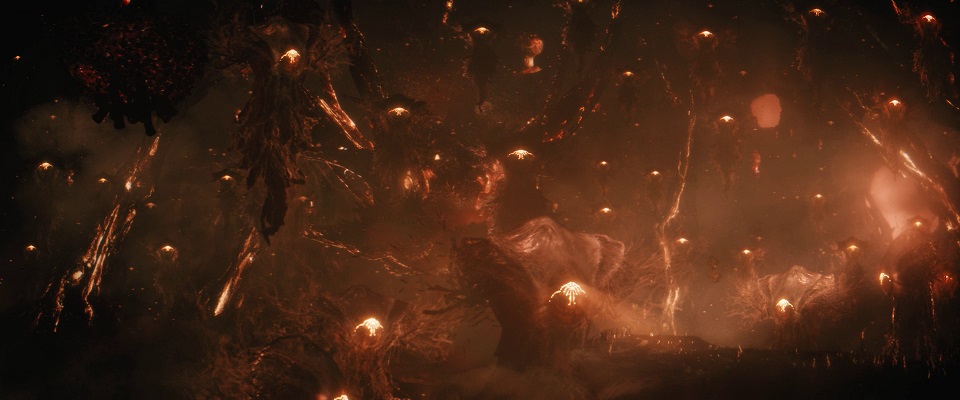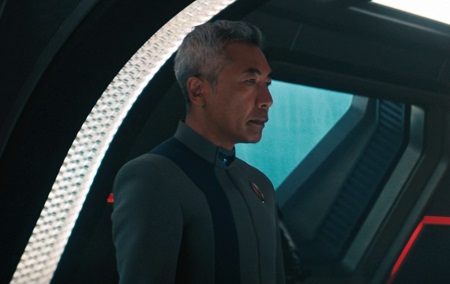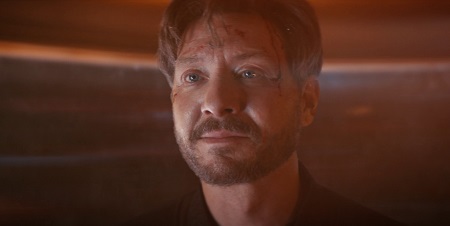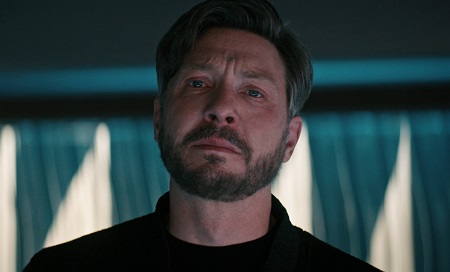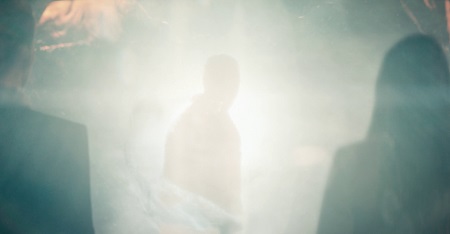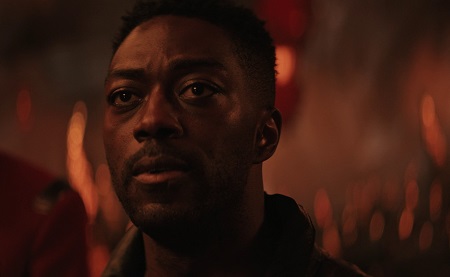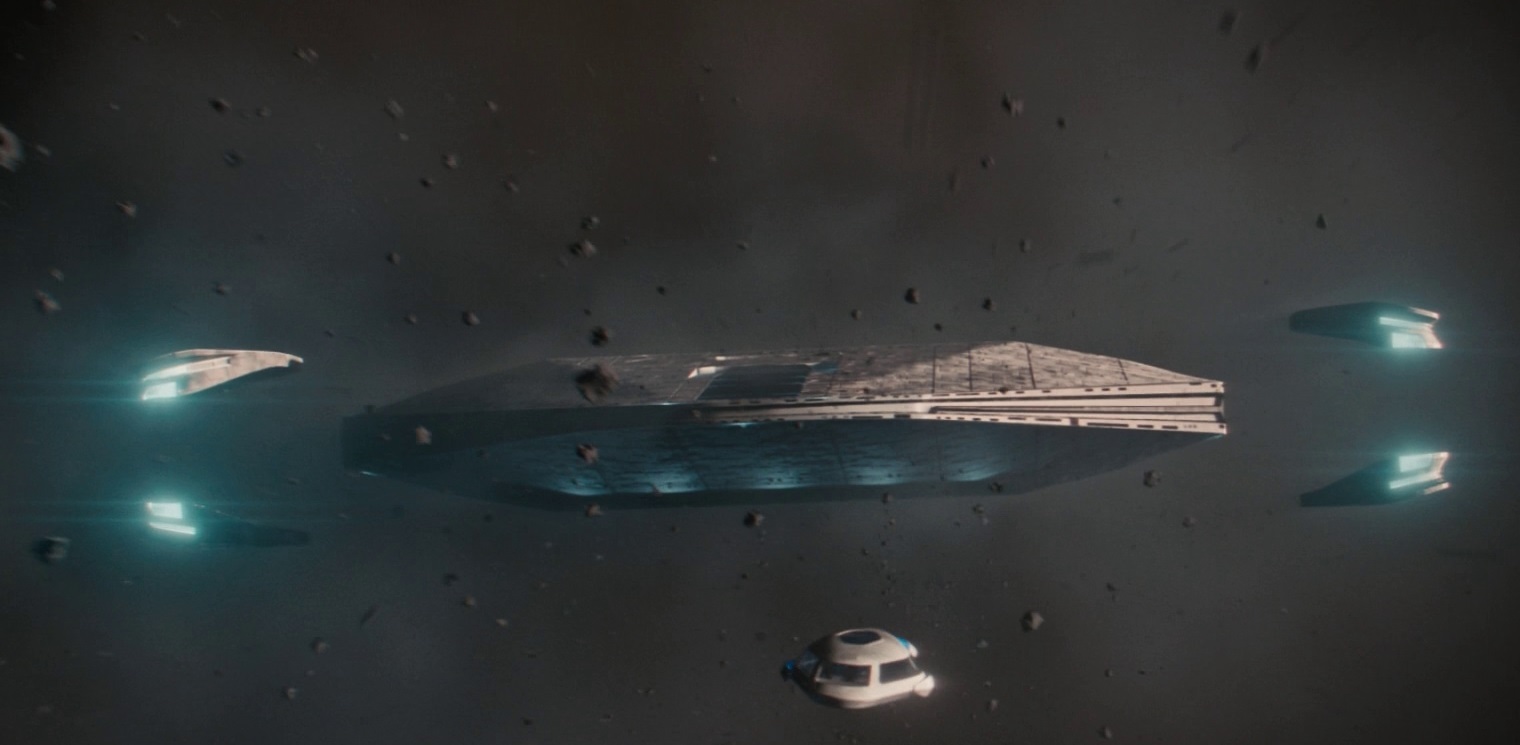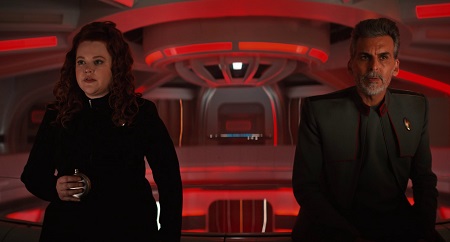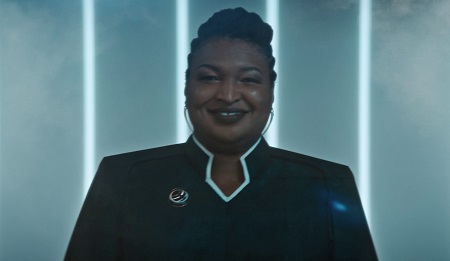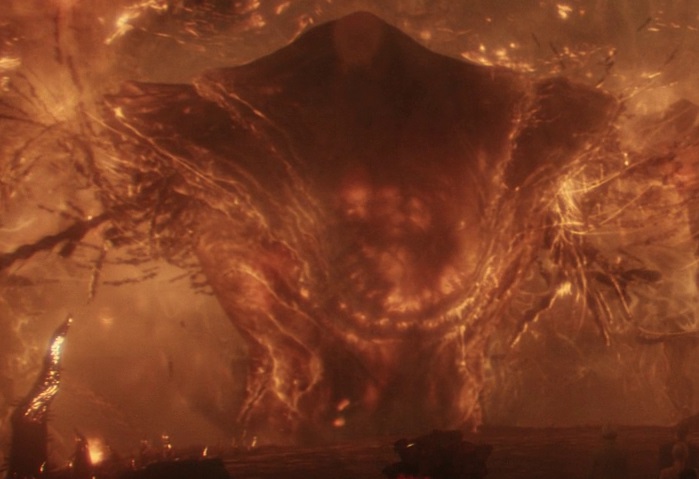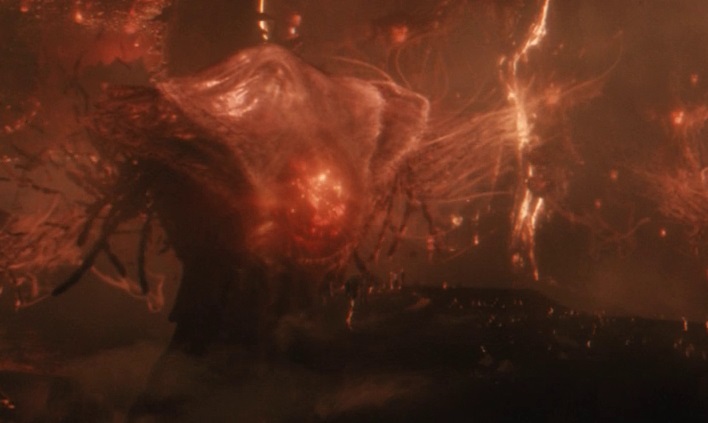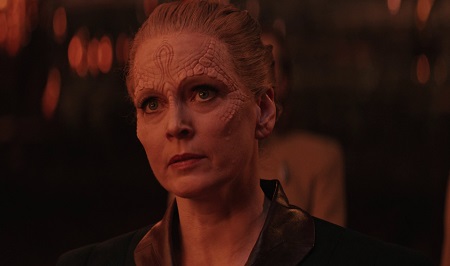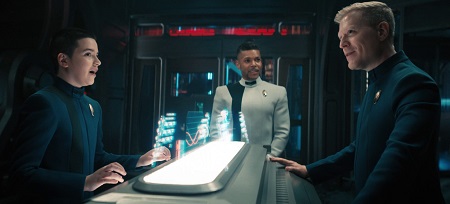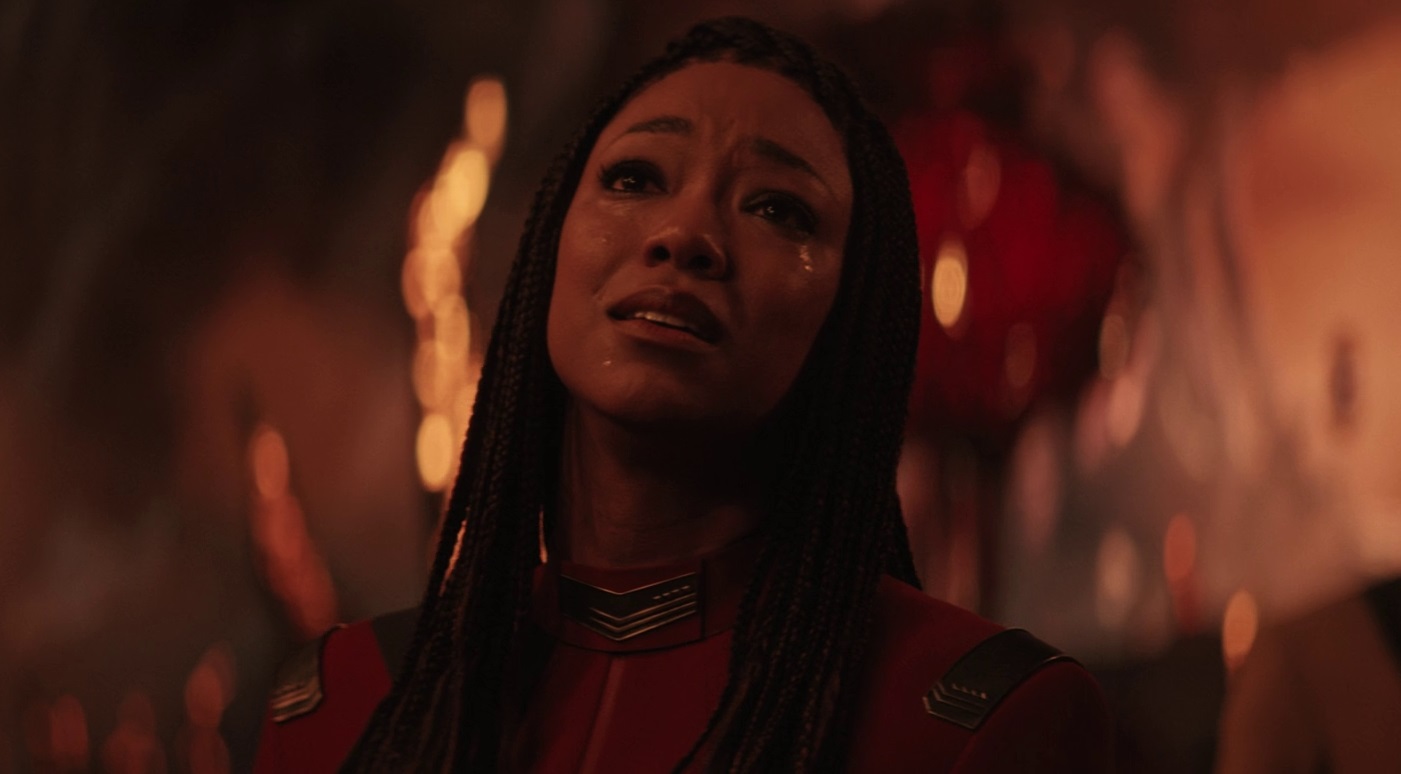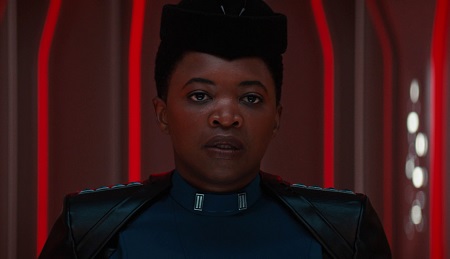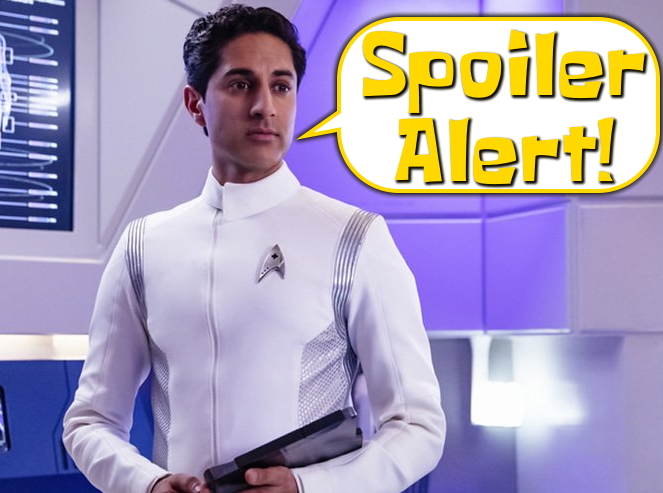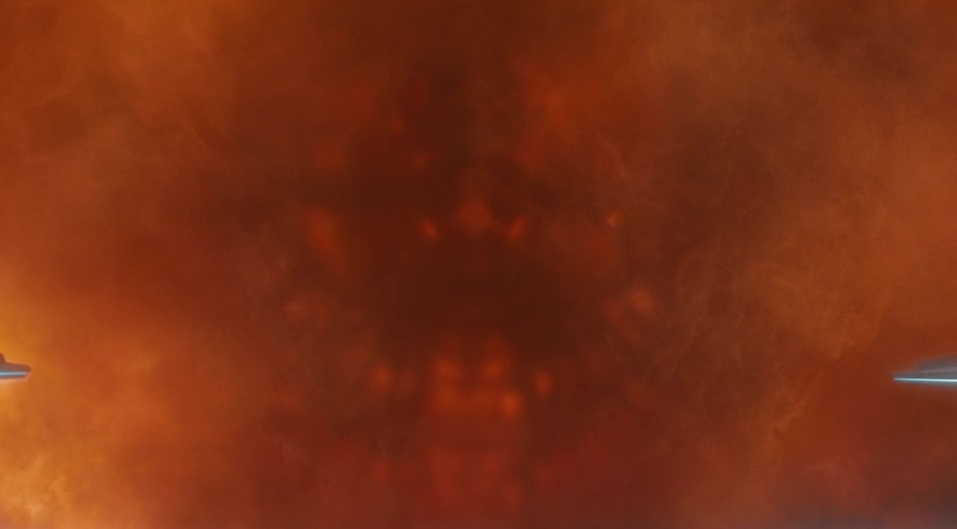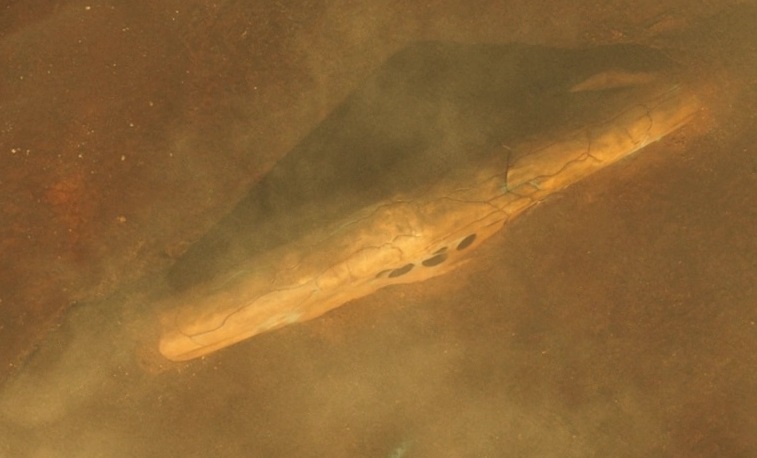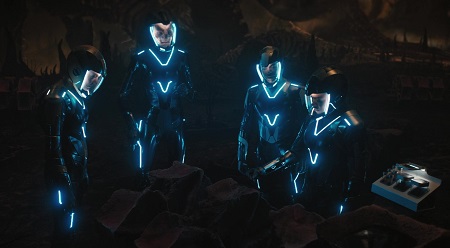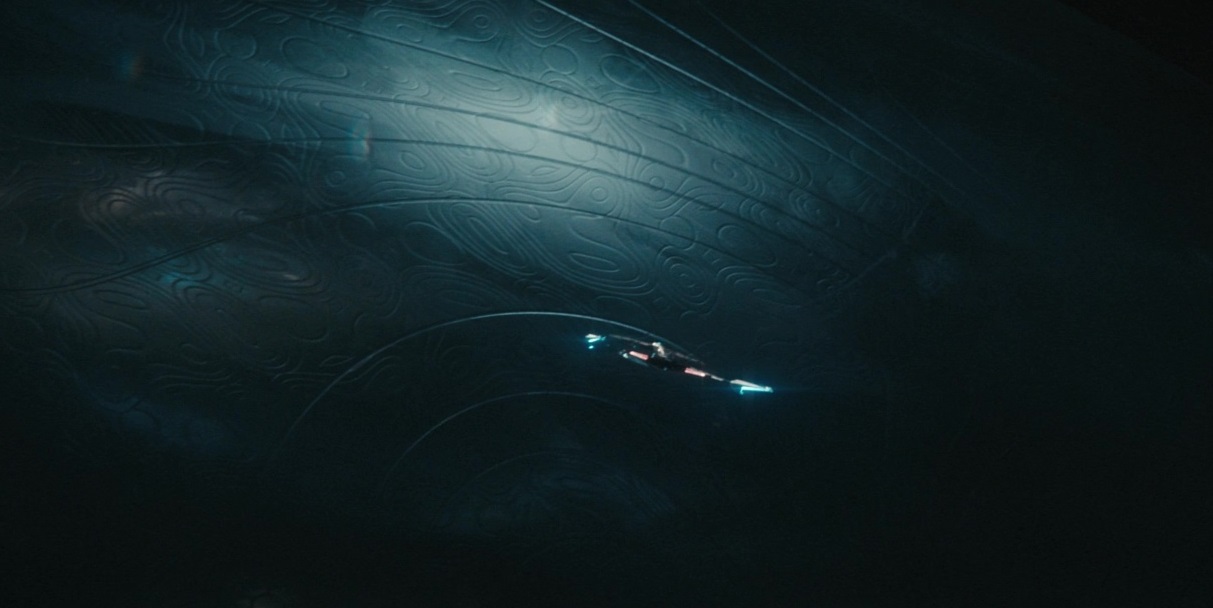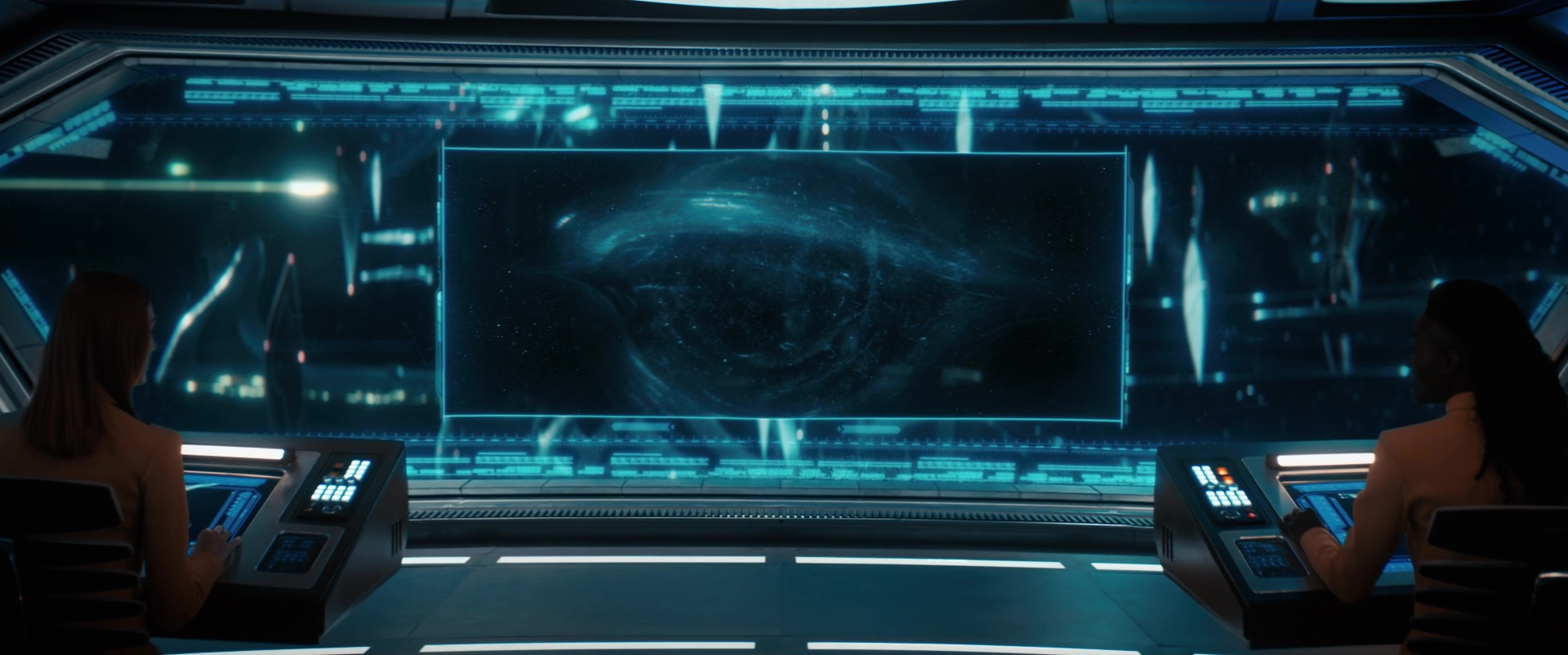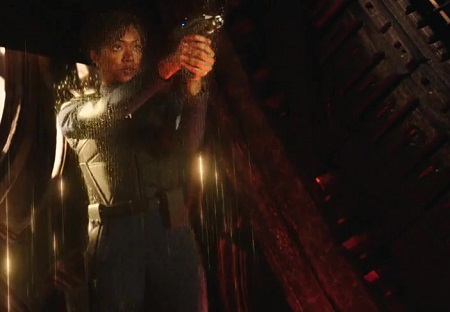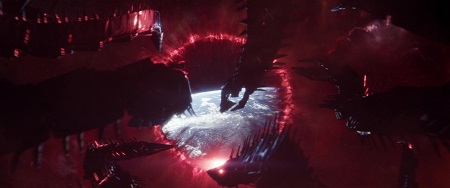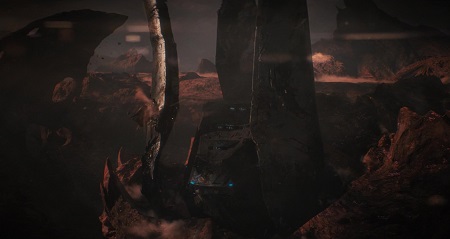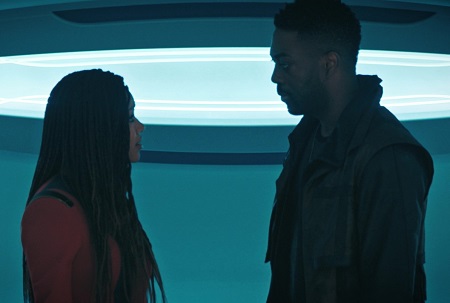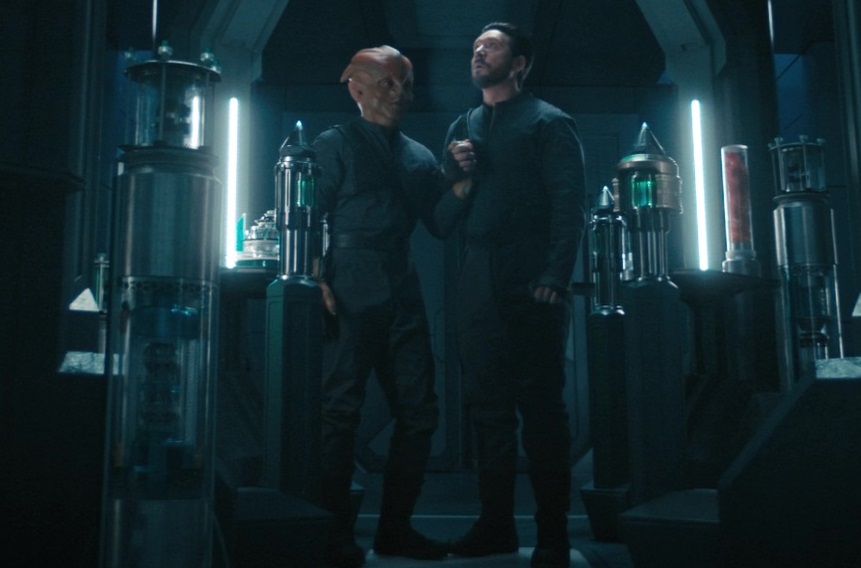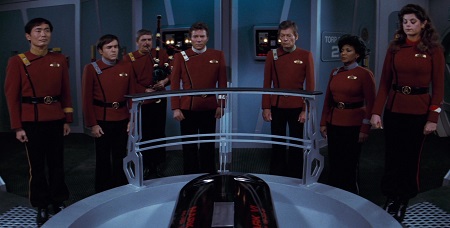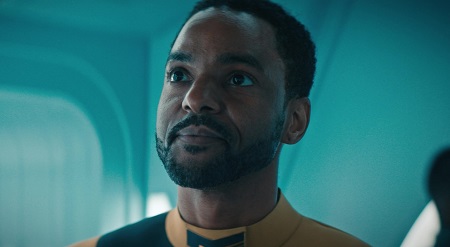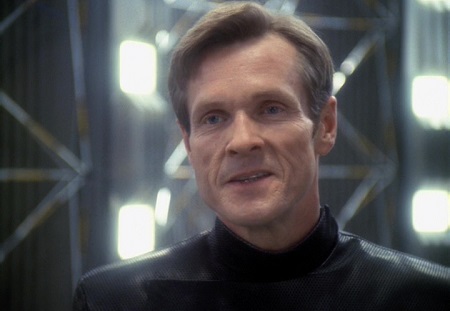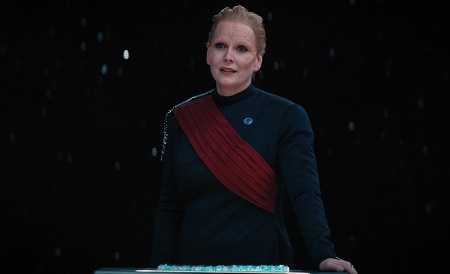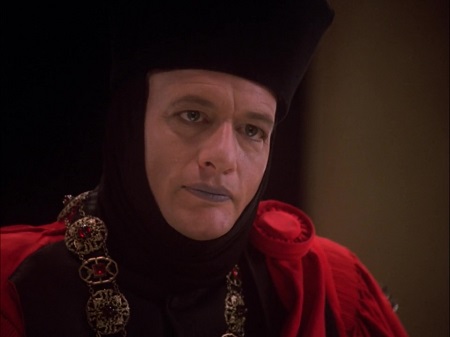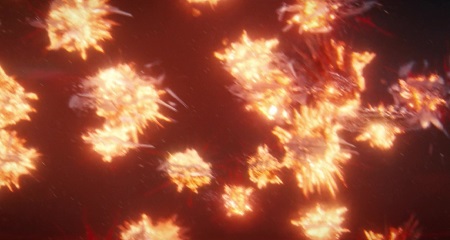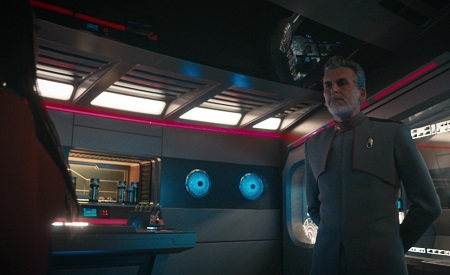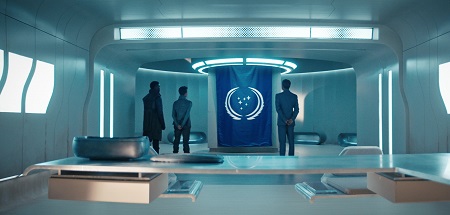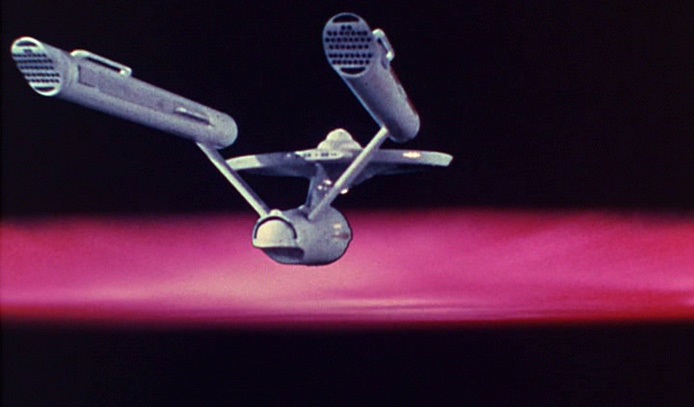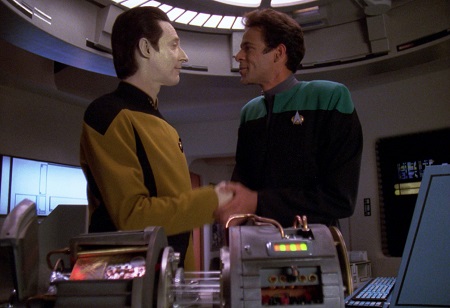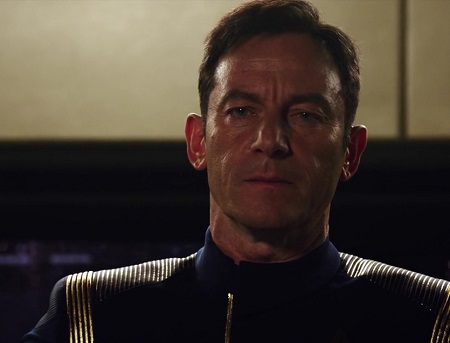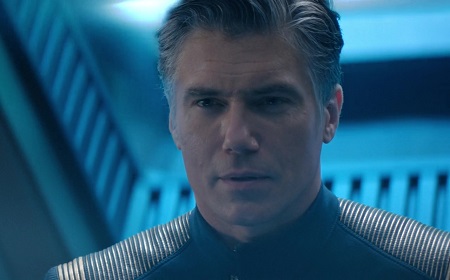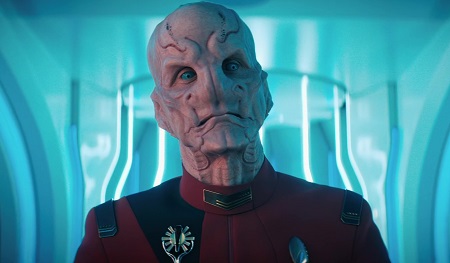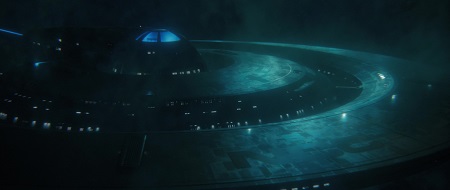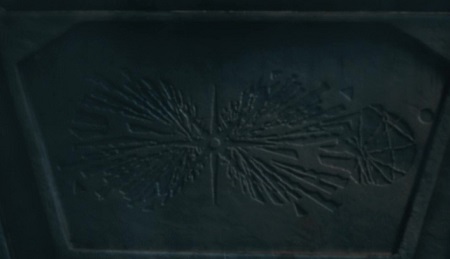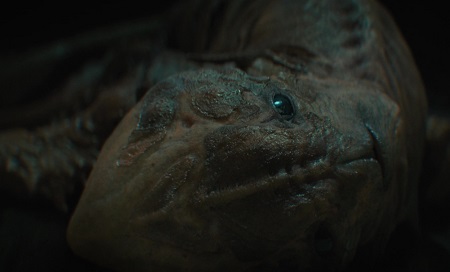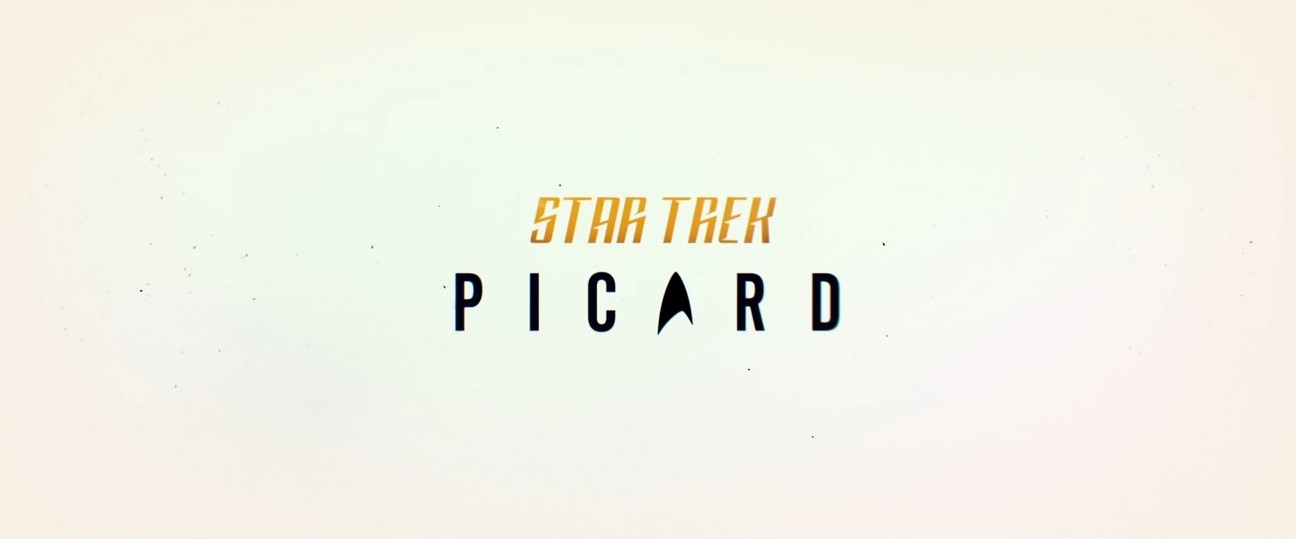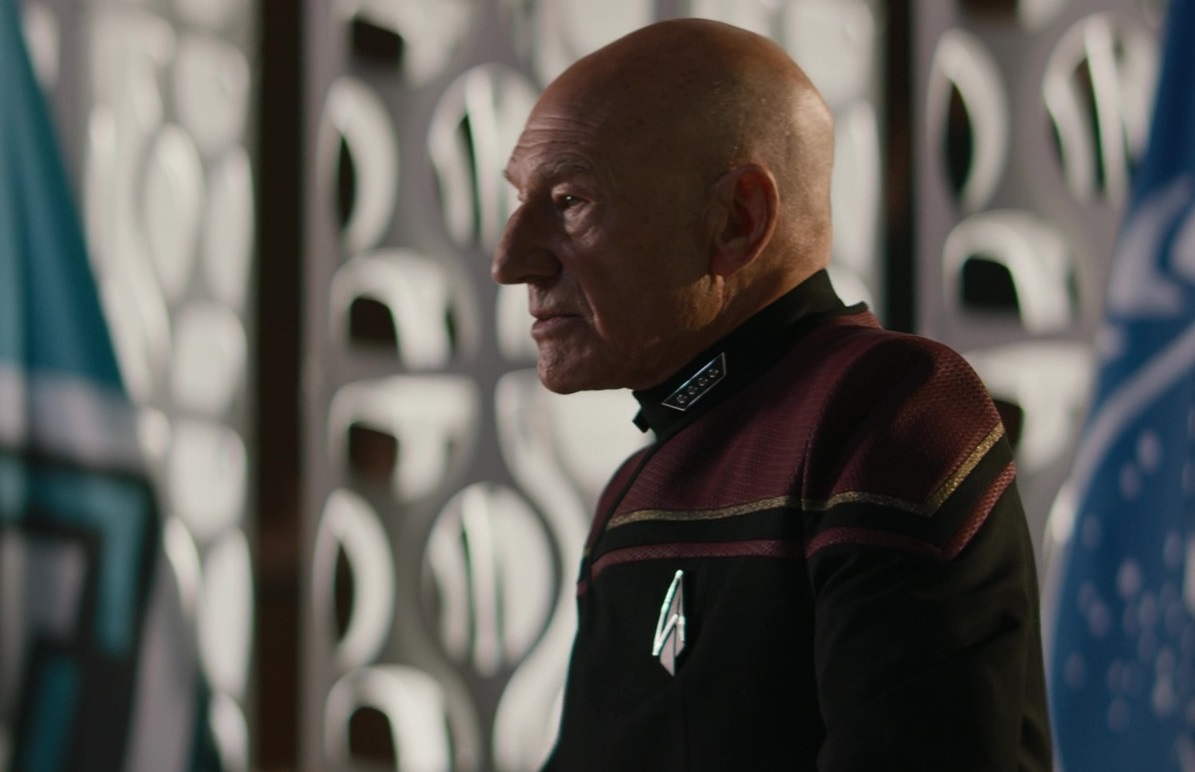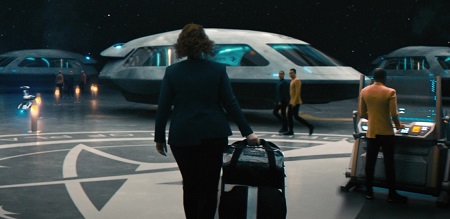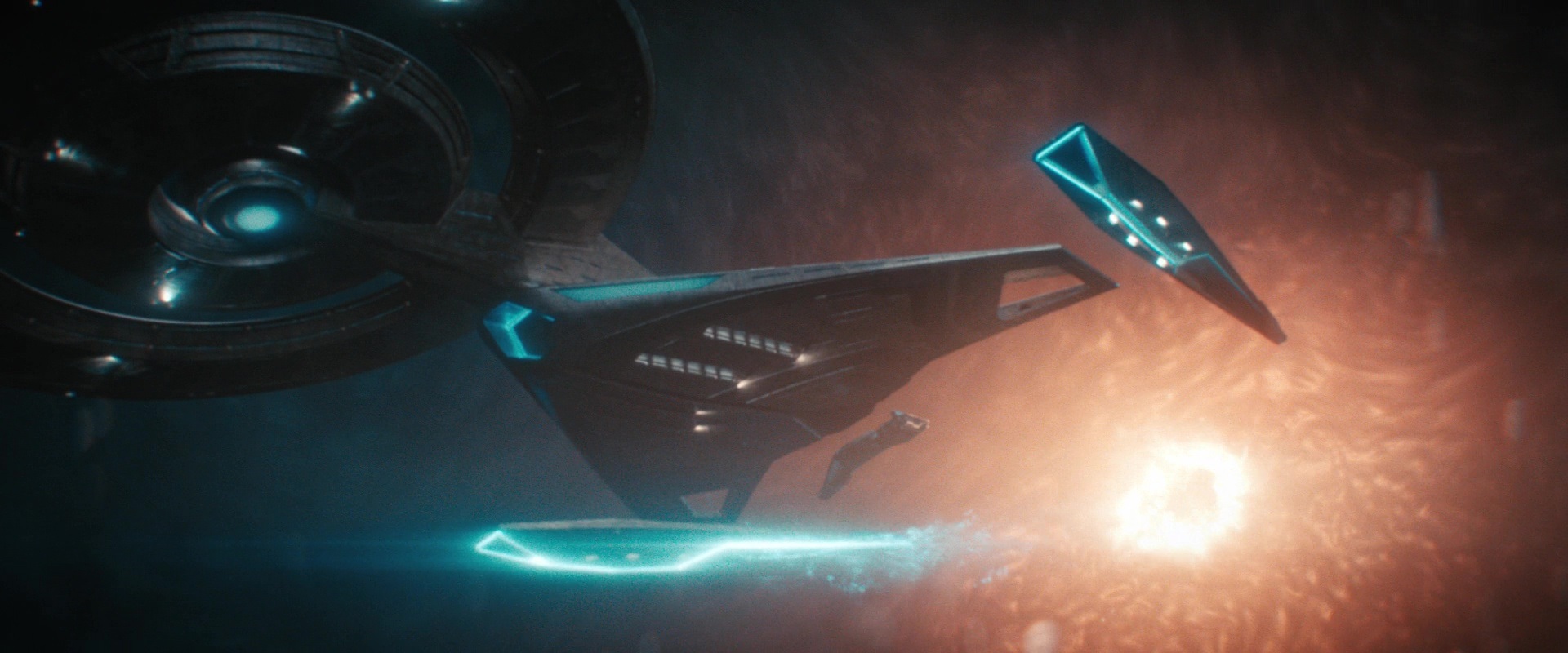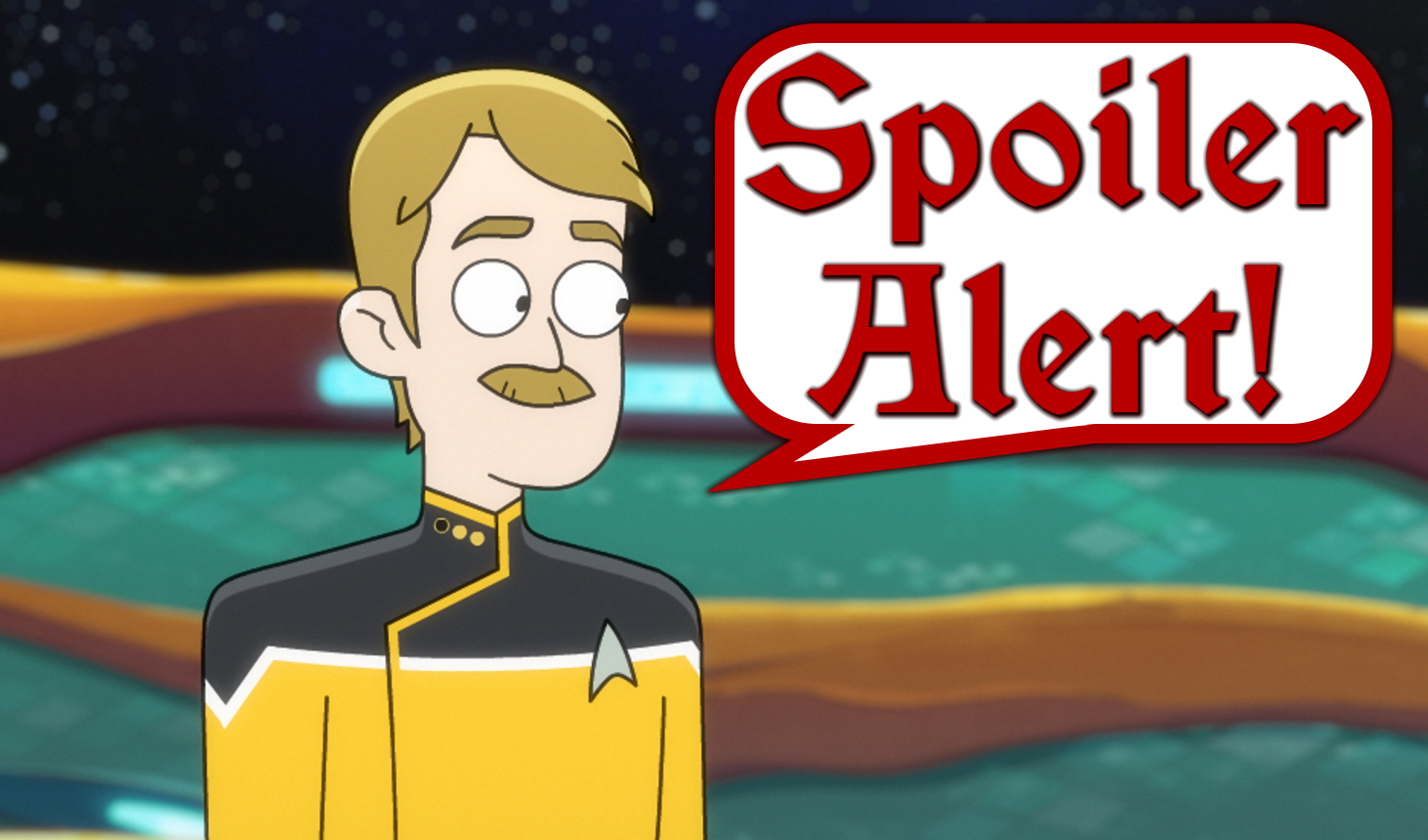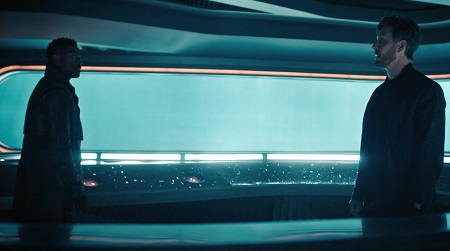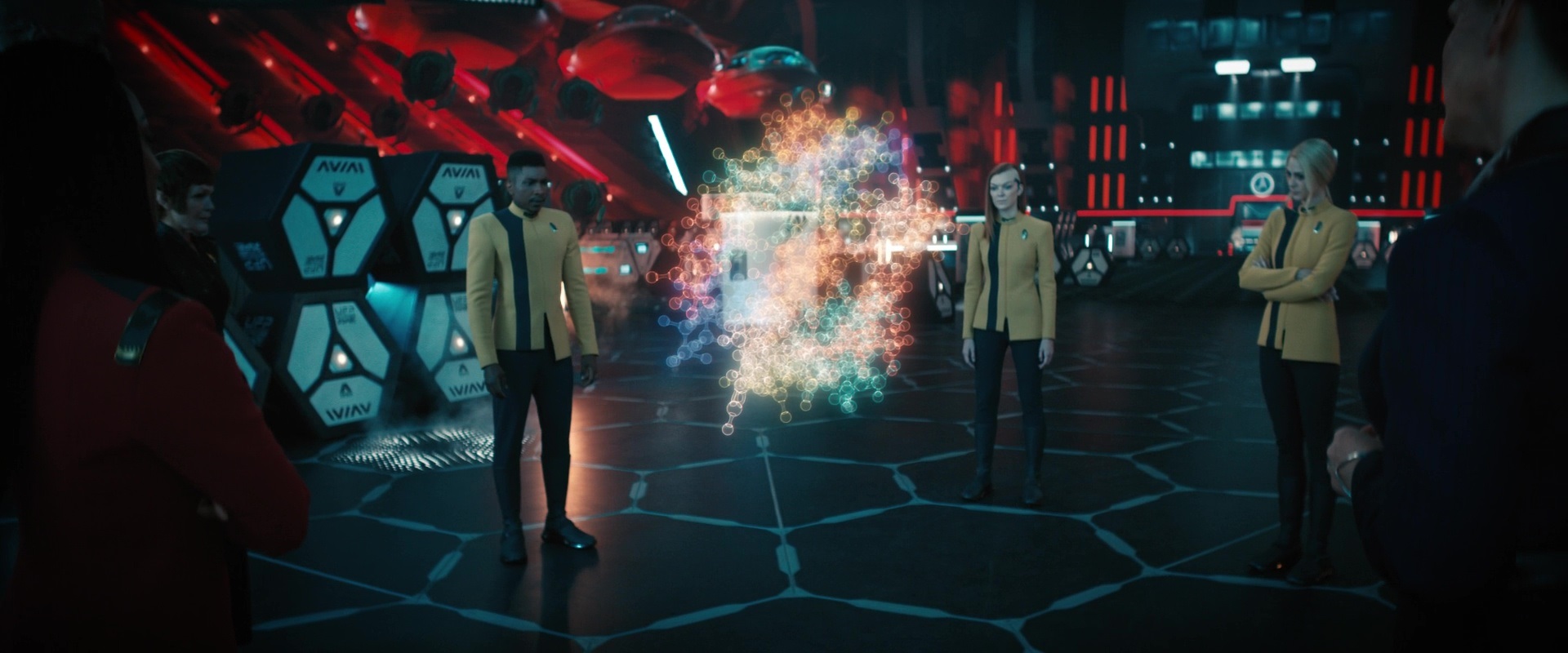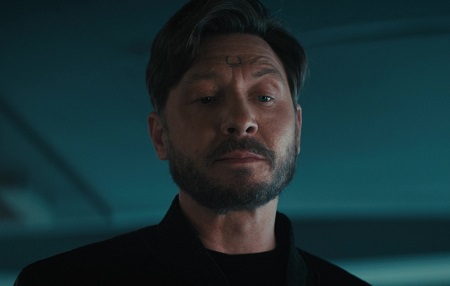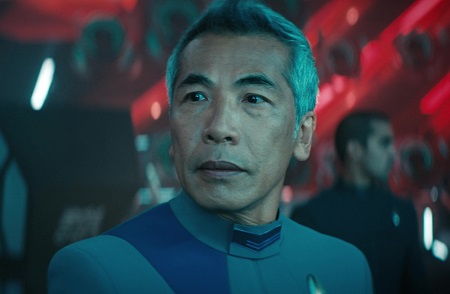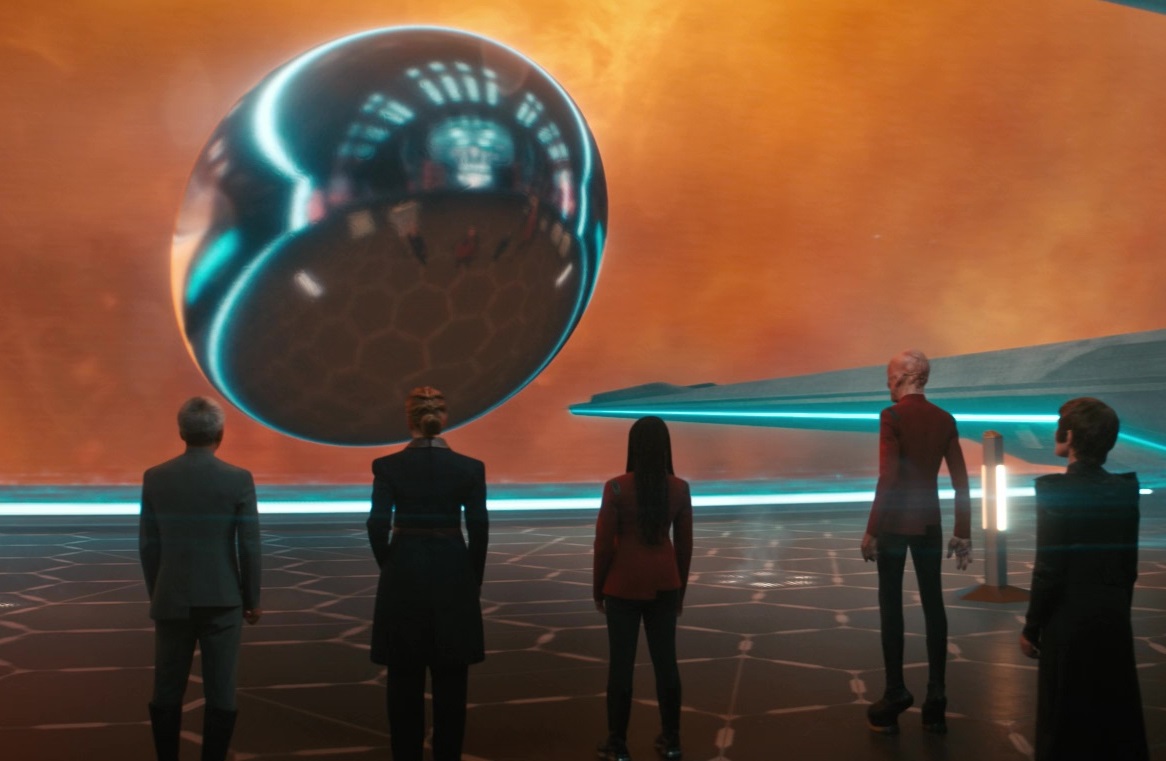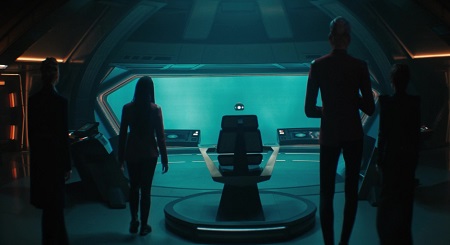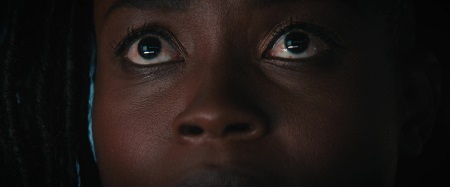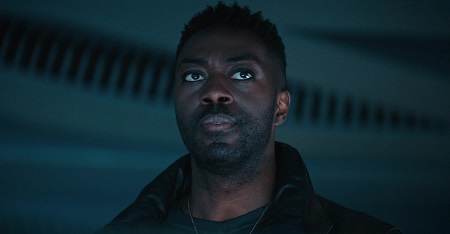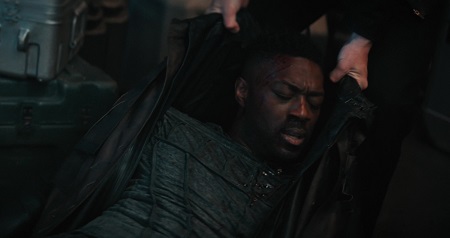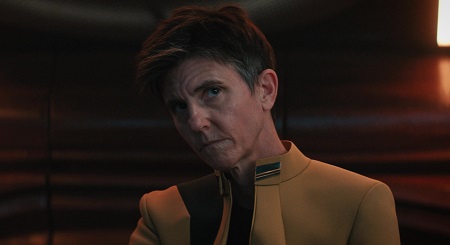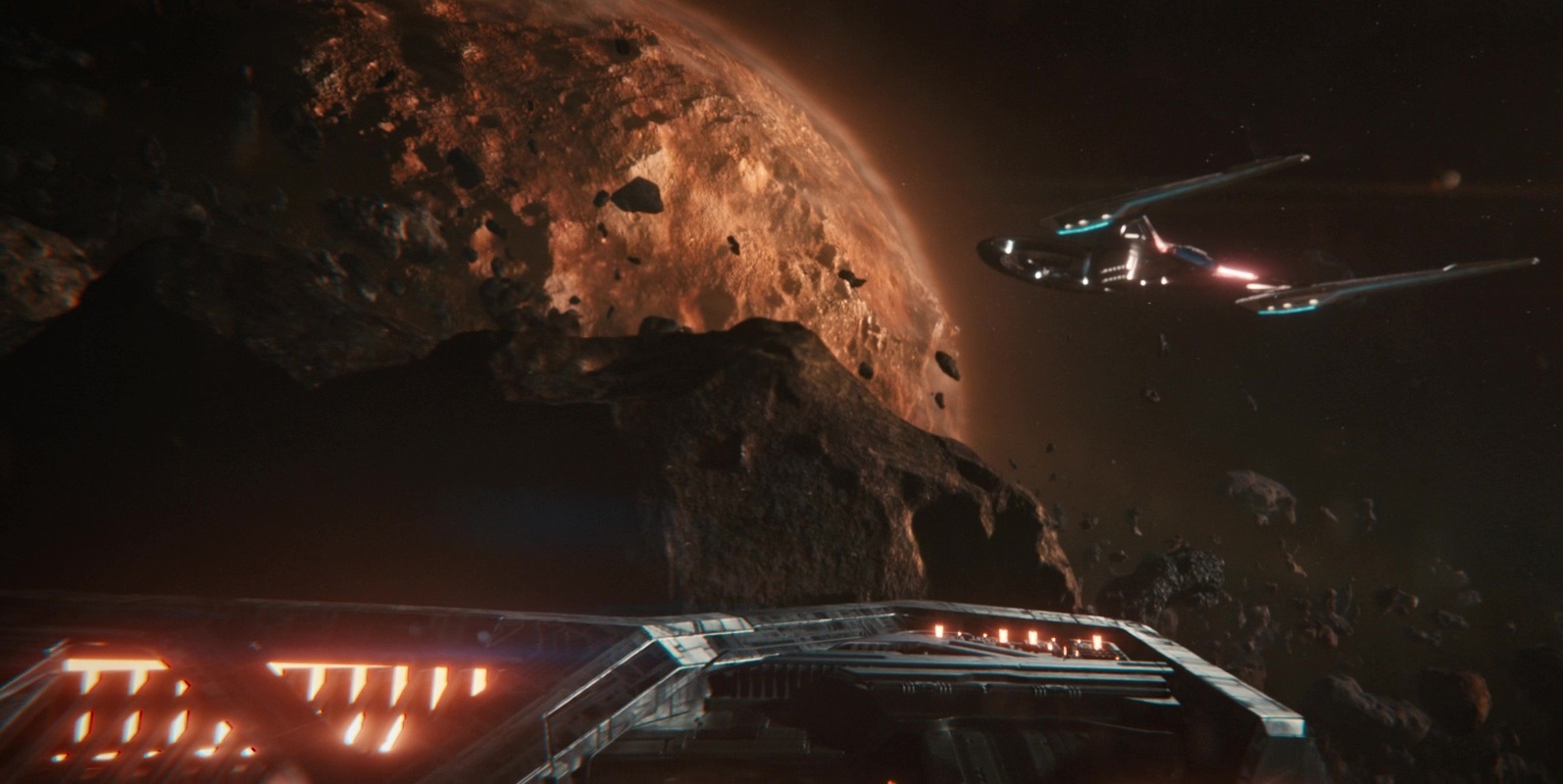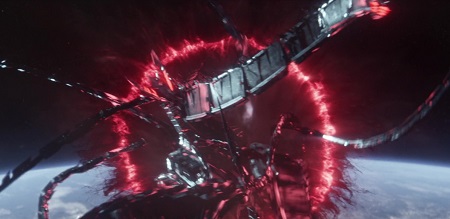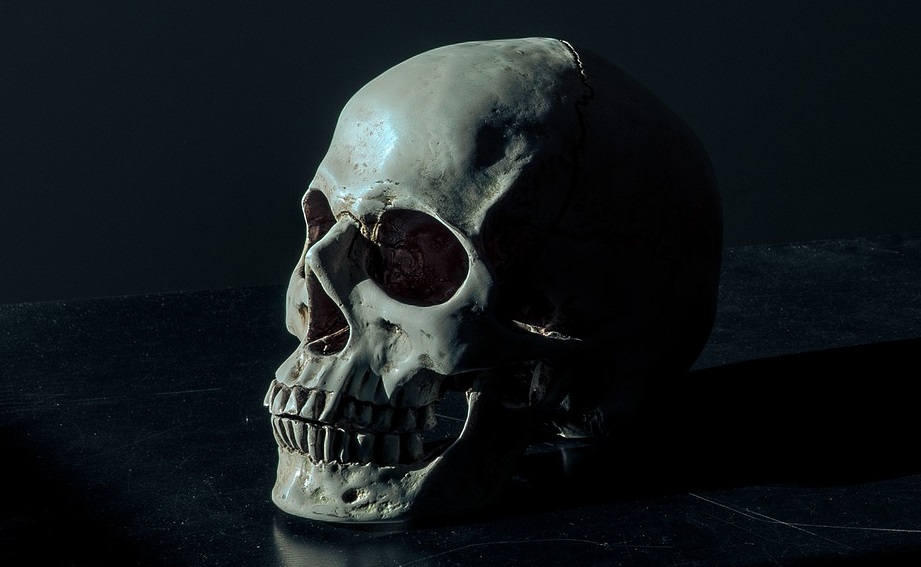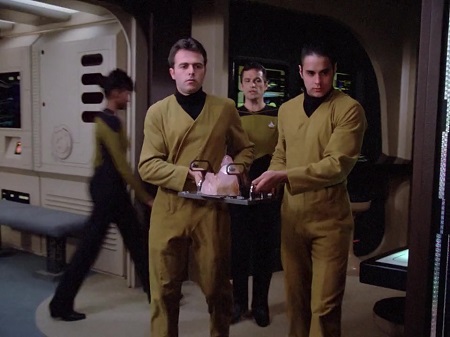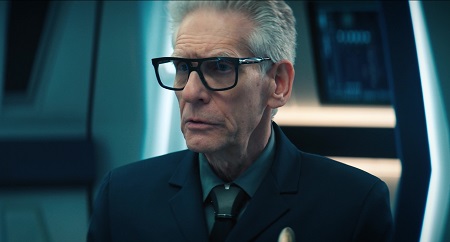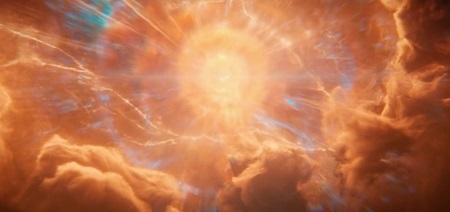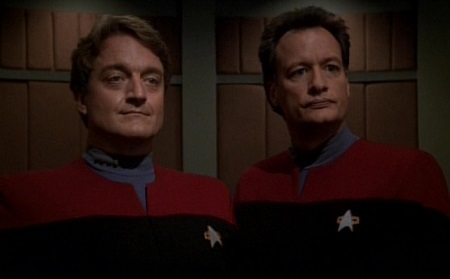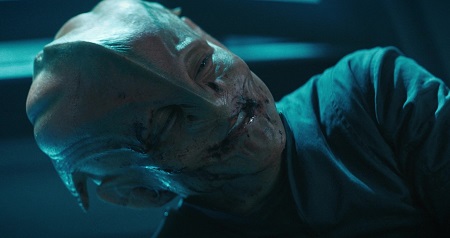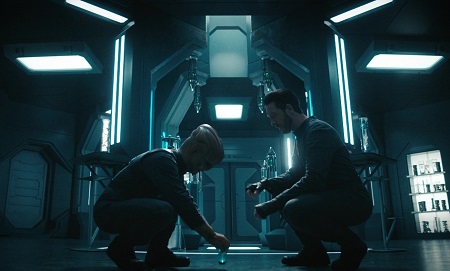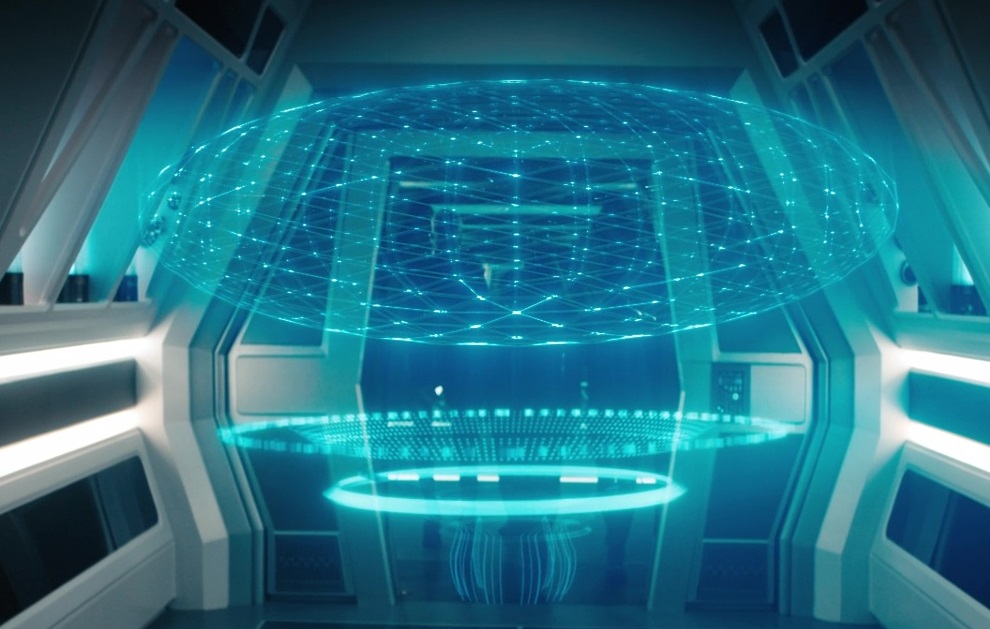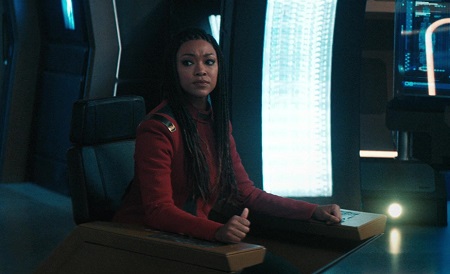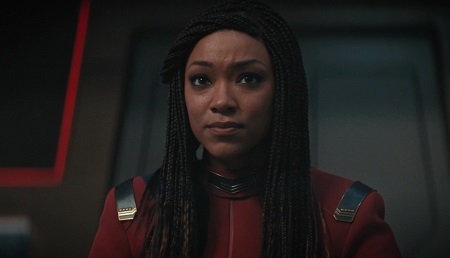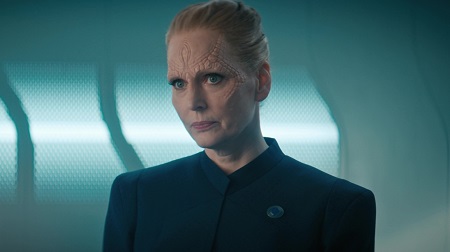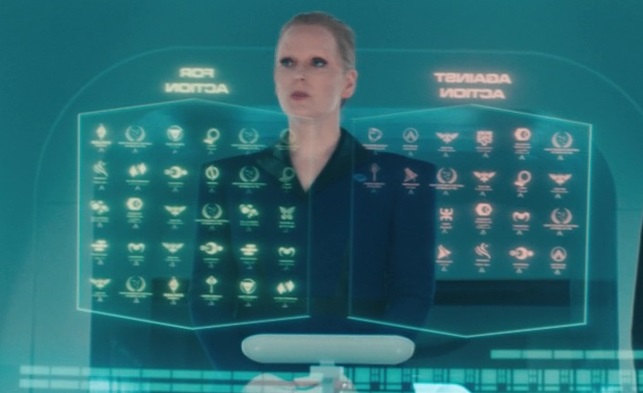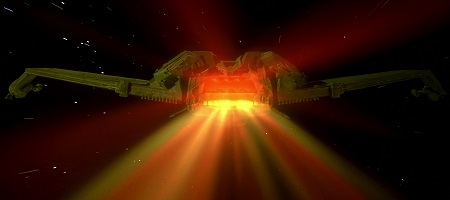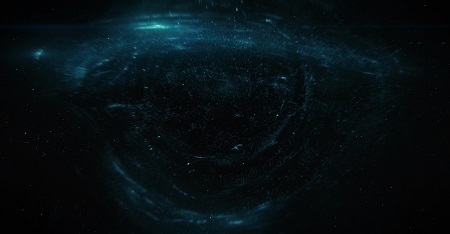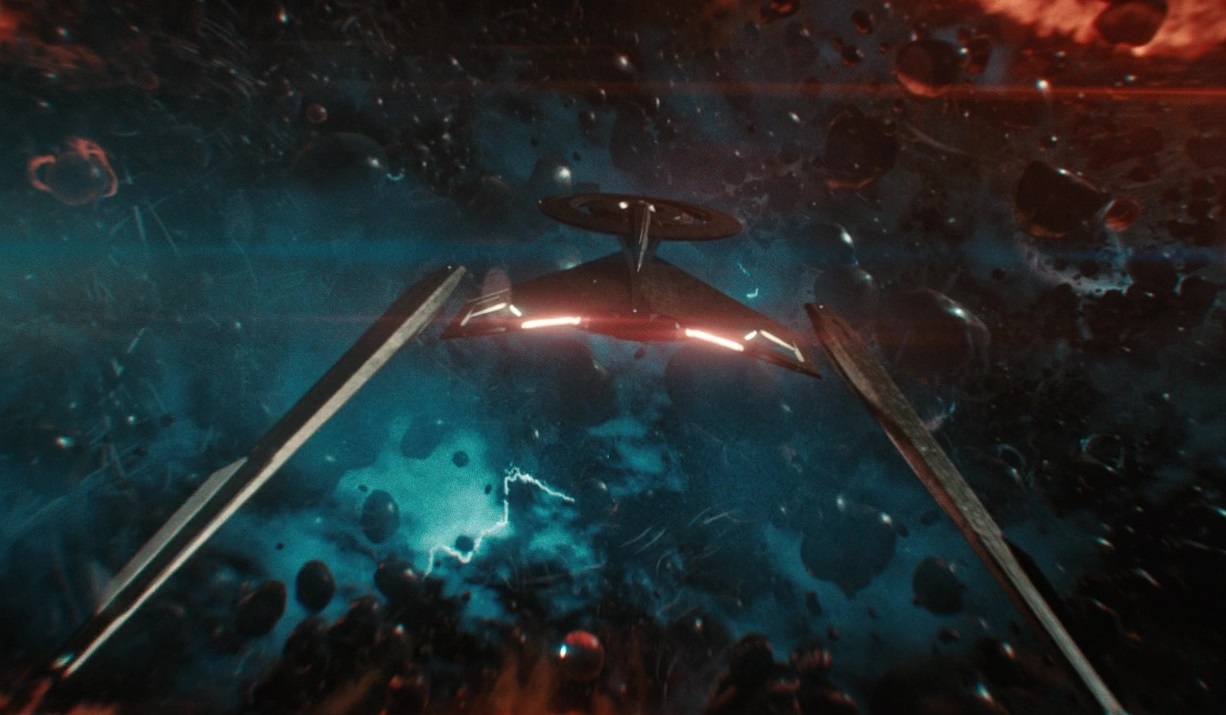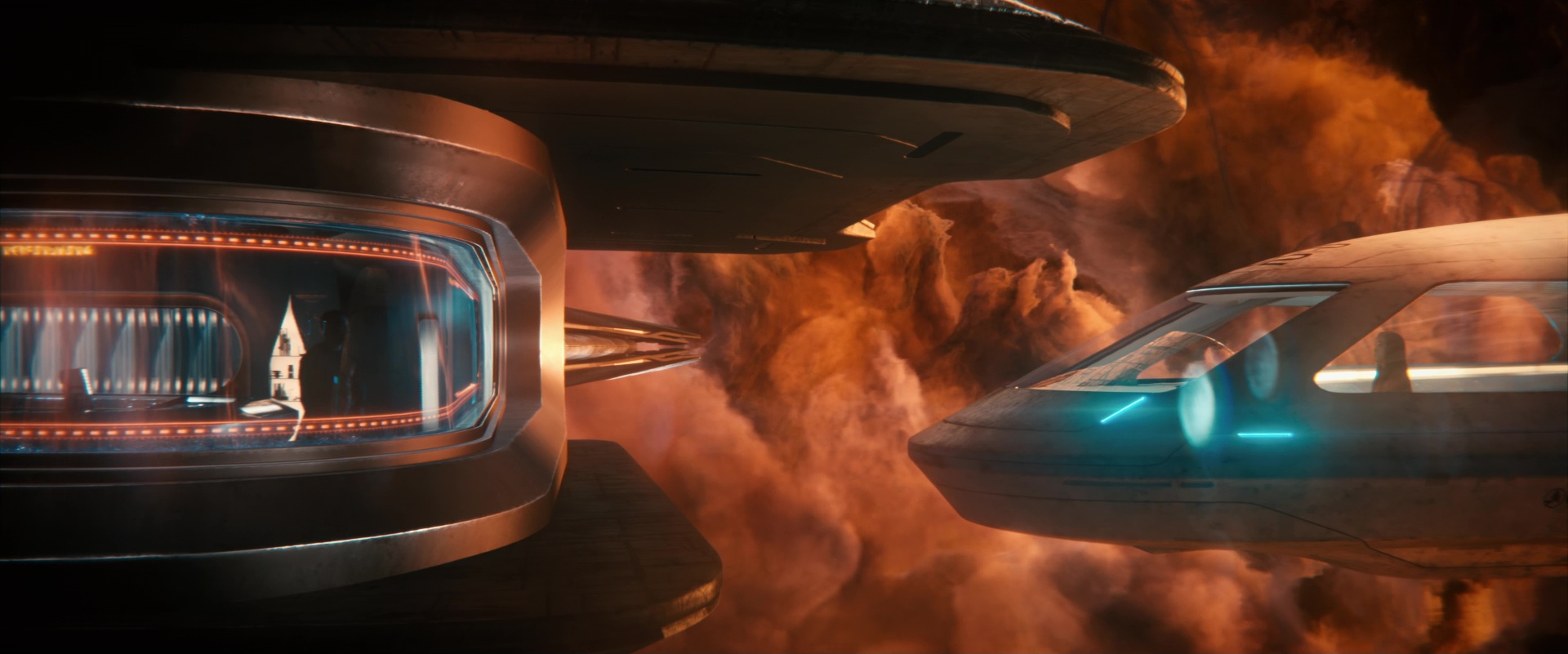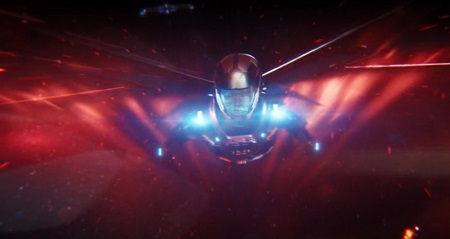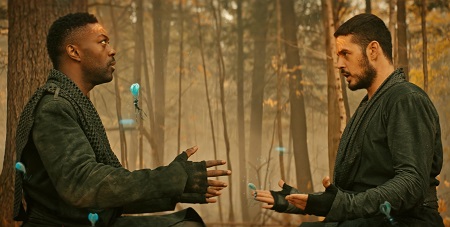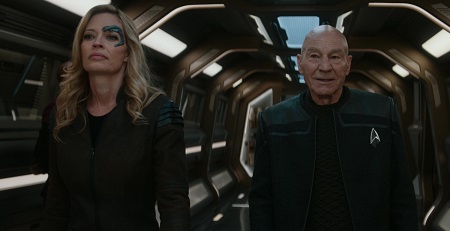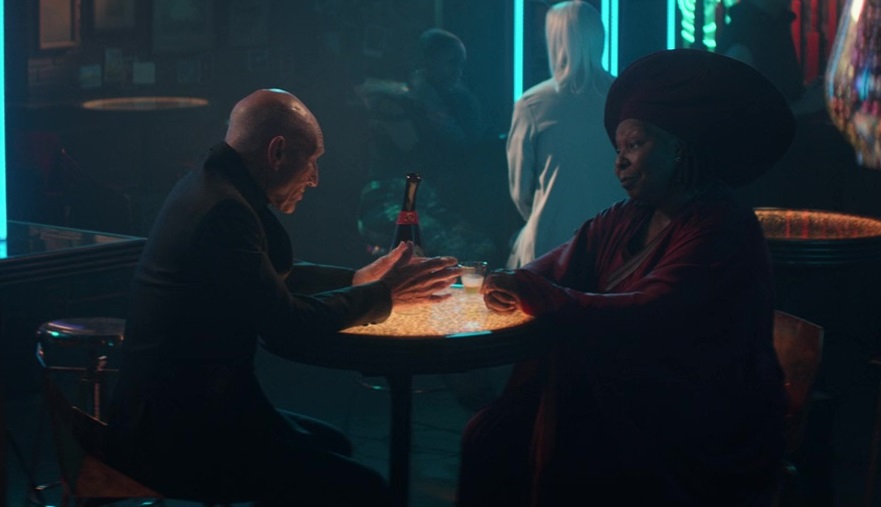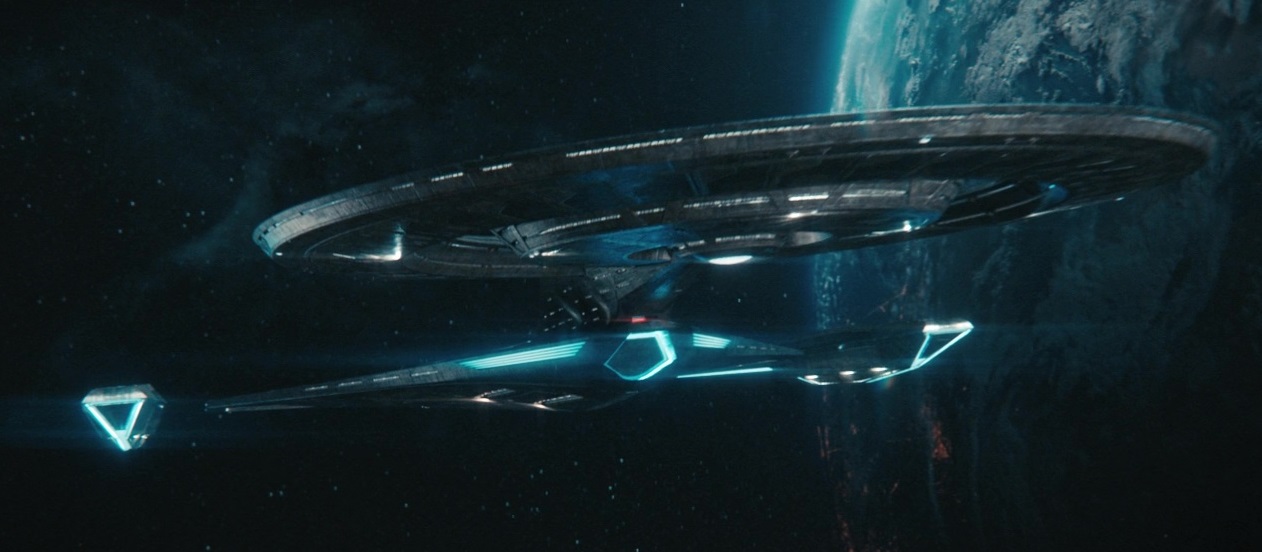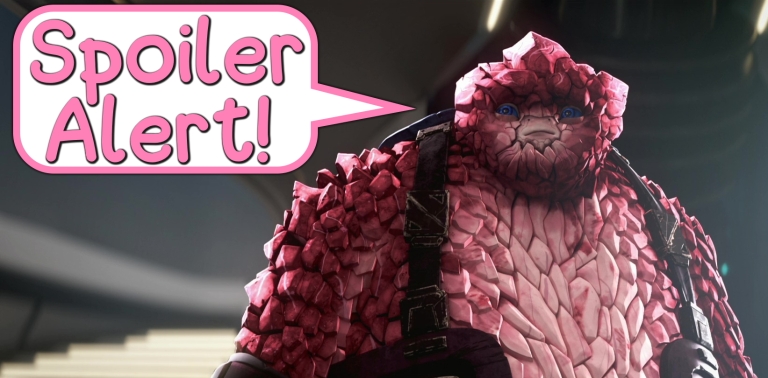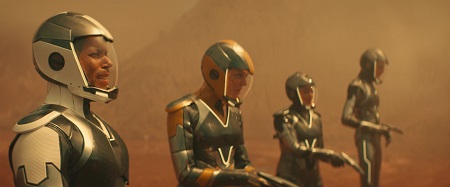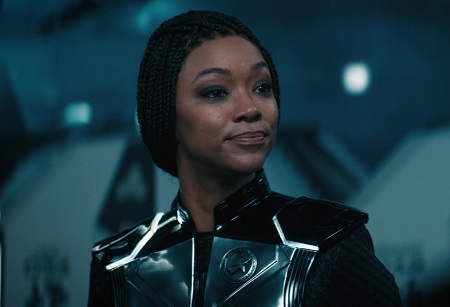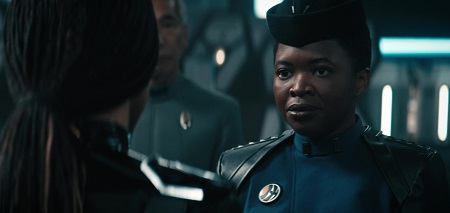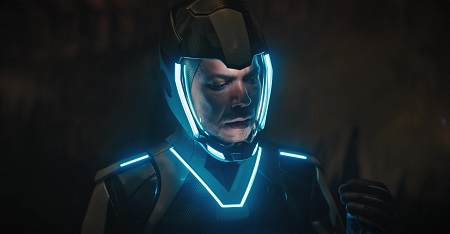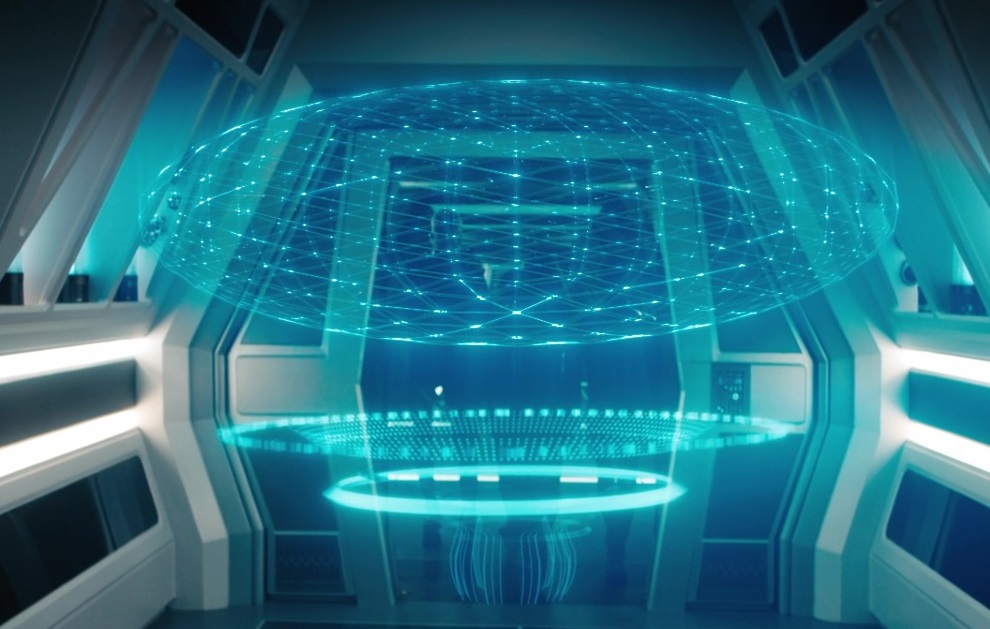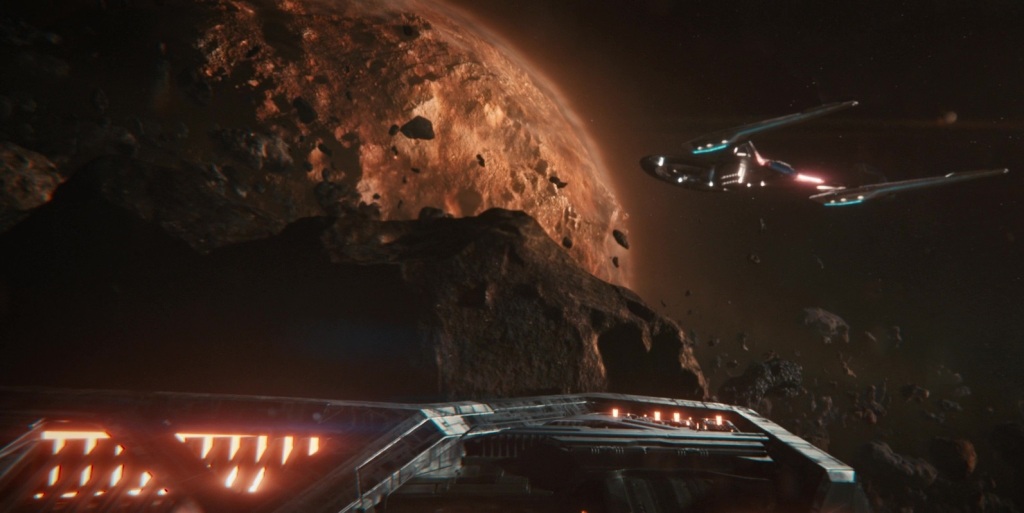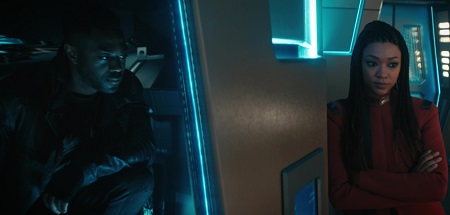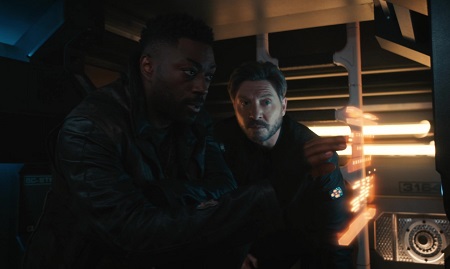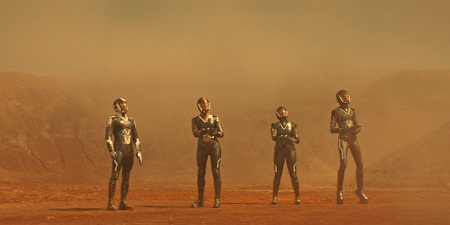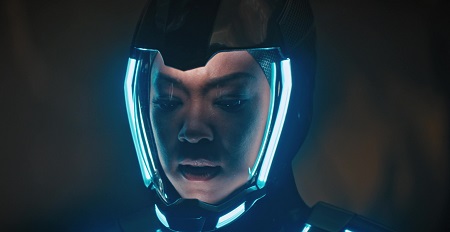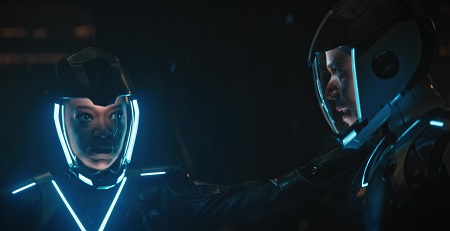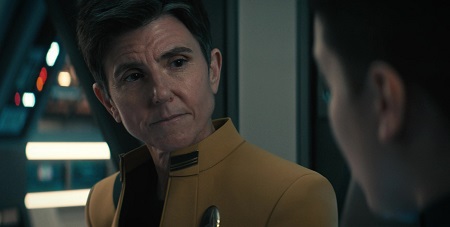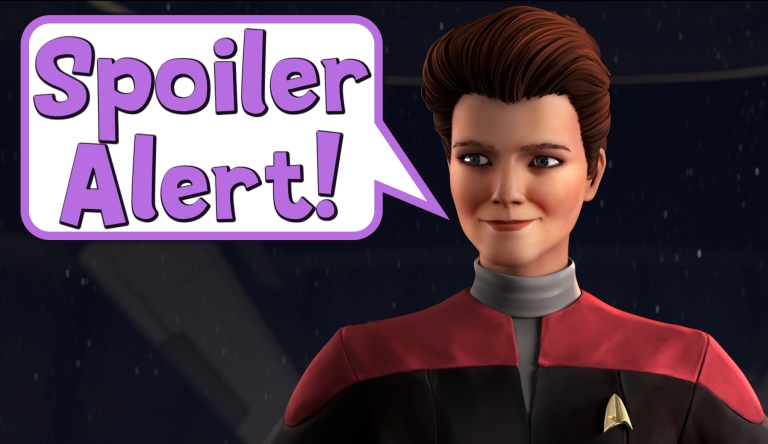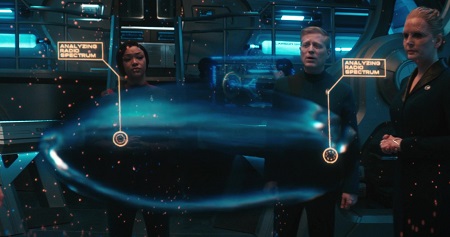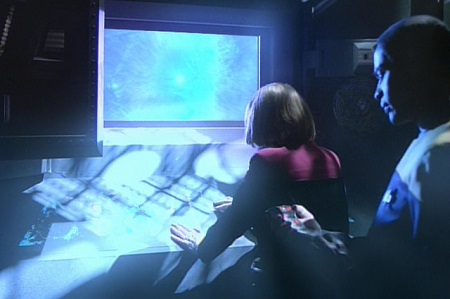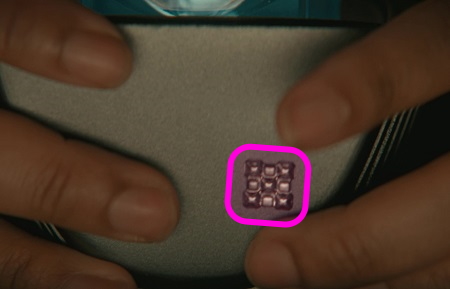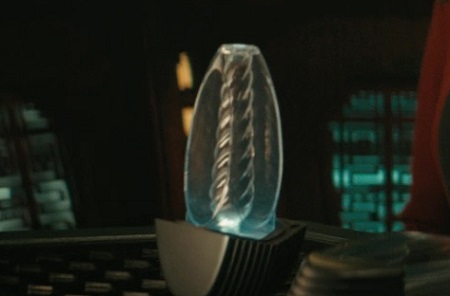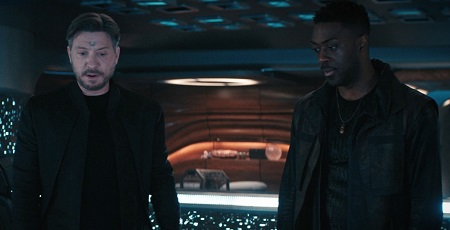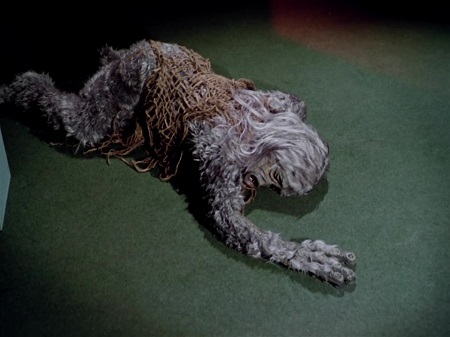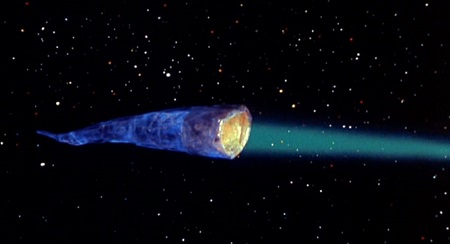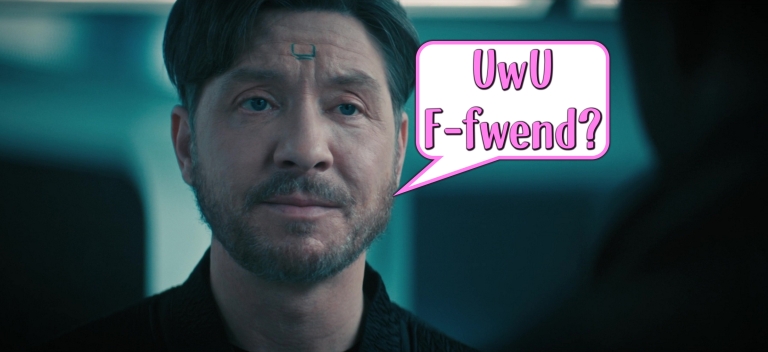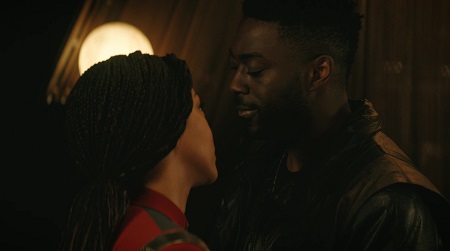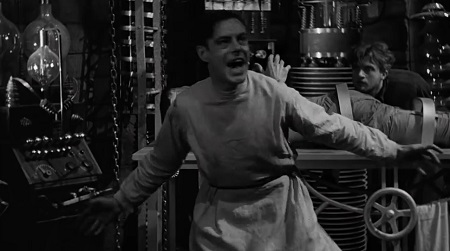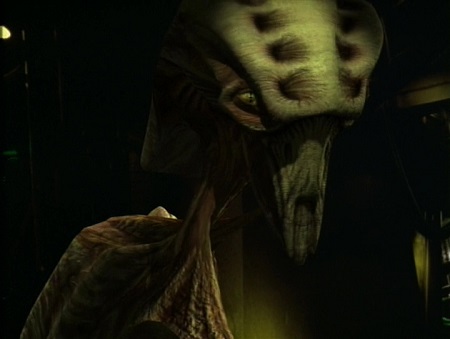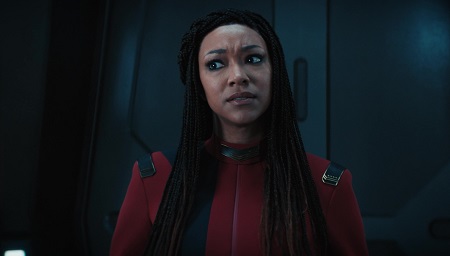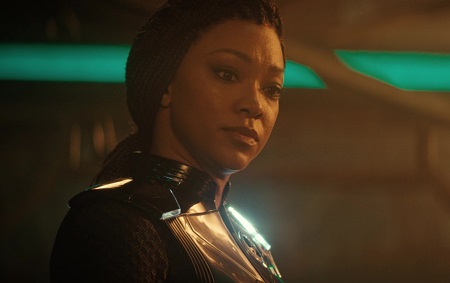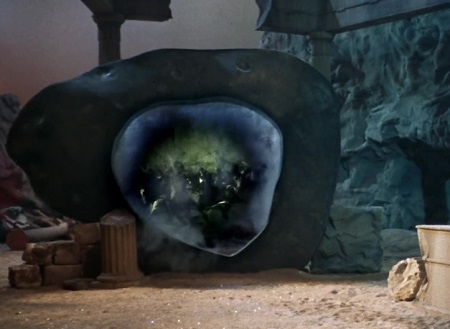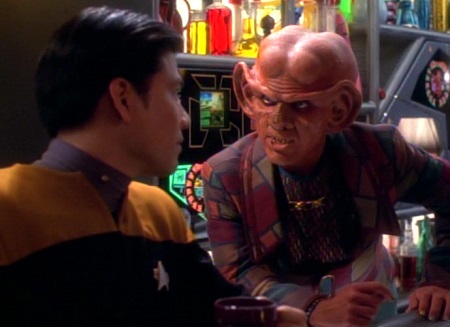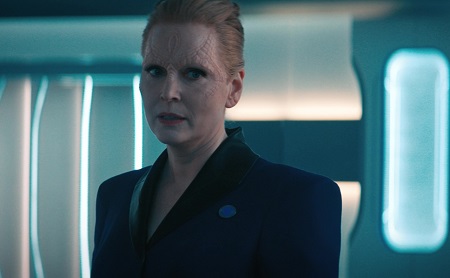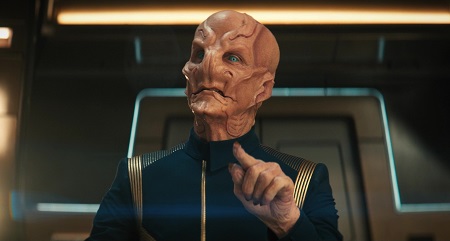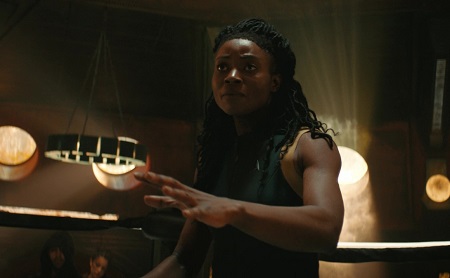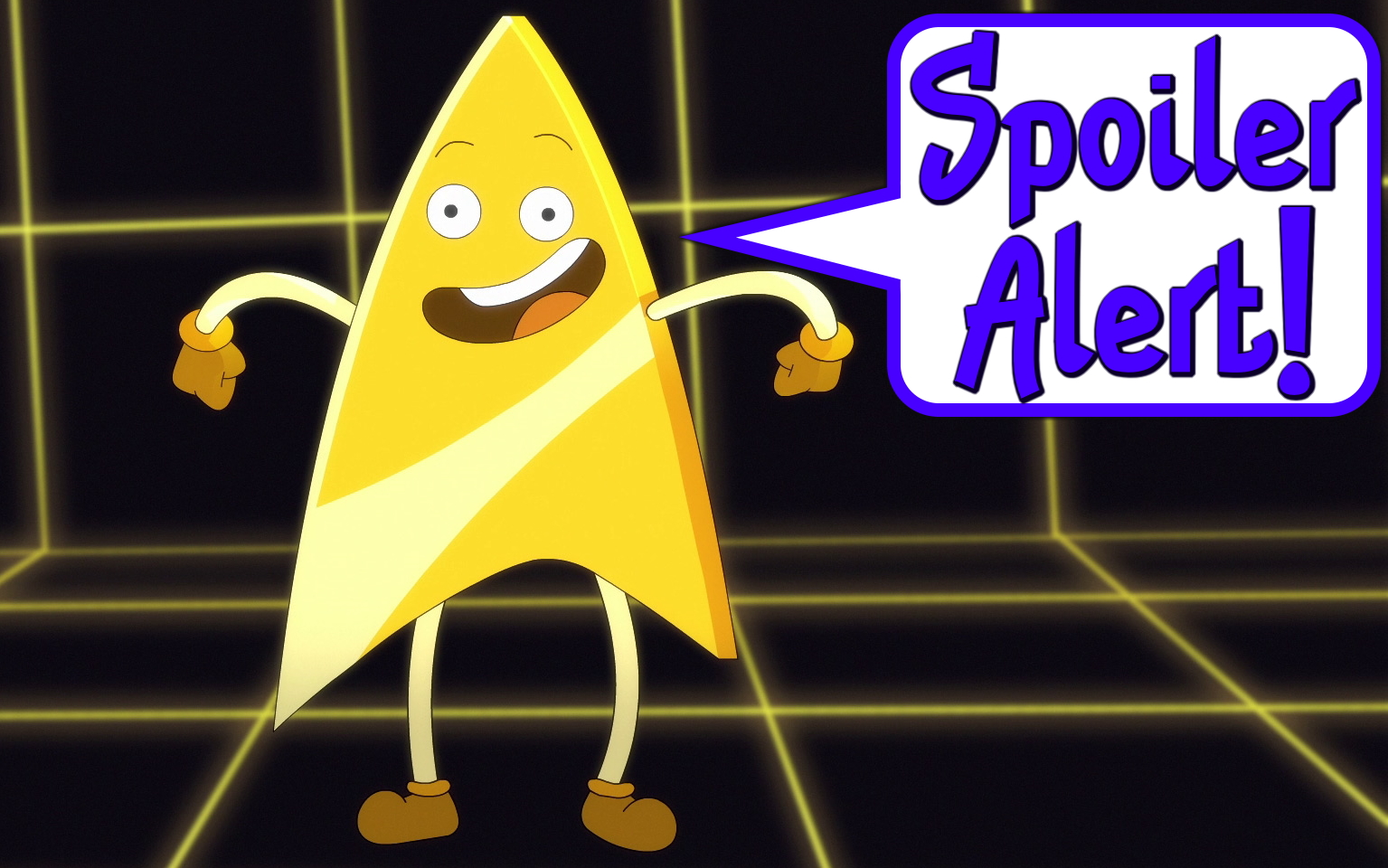
Spoiler Warning: There are spoilers ahead for Star Trek: Discovery Seasons 1-4. Spoilers are also present for the following Star Trek productions: Picard Season 2, Voyager, Enterprise, and The Next Generation.
Discovery’s fourth season concluded just over a month ago, but for some reason I’d forgotten to wrap up my theory list! I blame the oversight on the excitement of Picard’s second season overlapping Discovery for the final few episodes… and, perhaps, the issues surrounding Strange New Worlds’ international broadcast. Regardless, we’re here now! So let’s get on with it, shall we?
In my review, I said that Coming Home was probably the high point of the season, and while the episode wasn’t perfect, it was a great way to bring an occasionally frustrating season to a close! Some of the complaints and criticisms that I made were more to do with Season 4 as a whole rather than Coming Home itself, and while we’ll touch on some of those points today, please stay tuned because I hope to write up my full thoughts on the entirety of Season 4 in the weeks ahead.
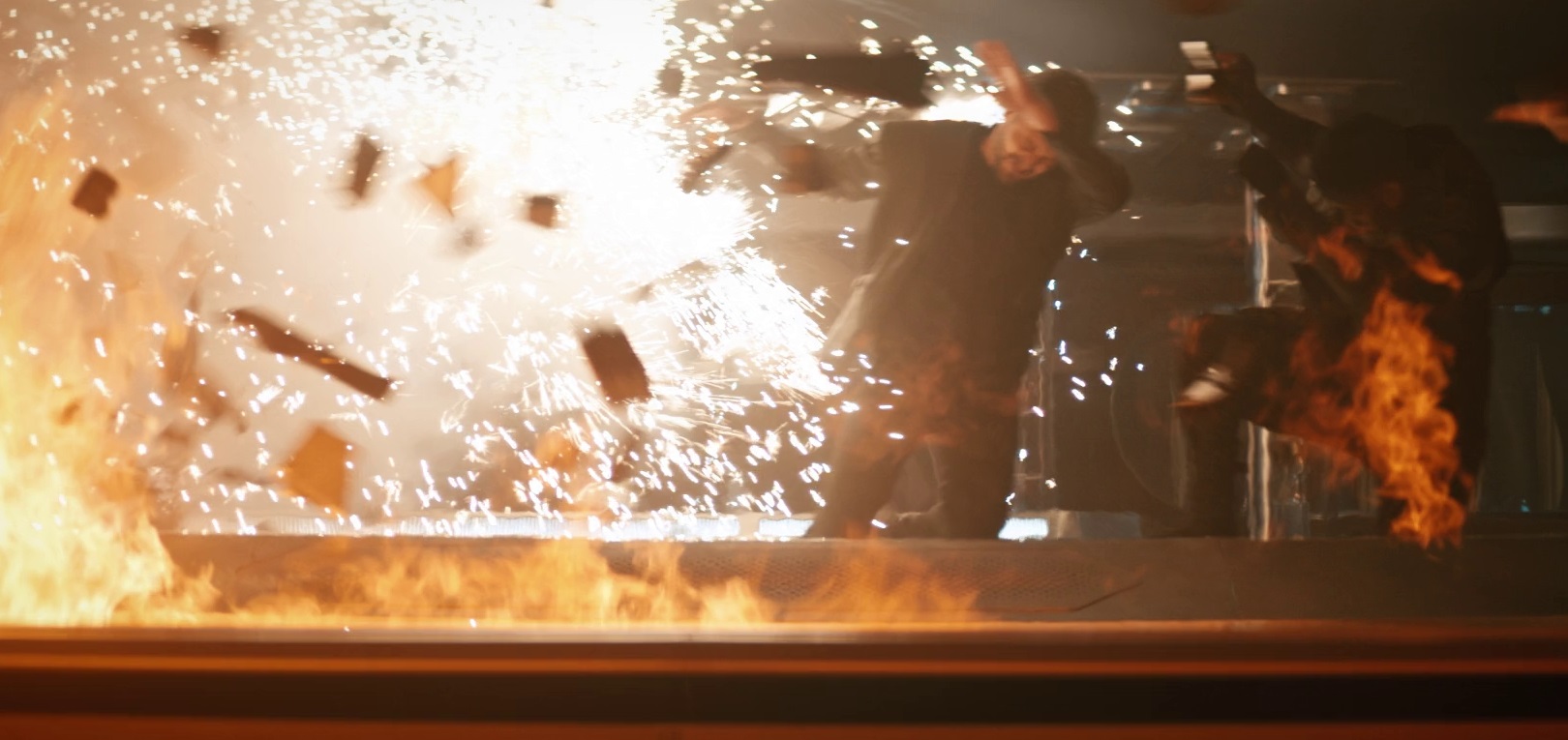
The theory list had grown quite long across Season 4, peaking in week 11 where I had 36 different theories in play – with varying levels of plausibility! By the time we got to the season finale that number had dipped somewhat, and there were 23 theories on the list going into Coming Home. I’ll be recapping each of them on this occasion, as well as three production-side theories that were also in play.
Keep an eye out for several of them to return in the run-up to Season 5, because a few theories that weren’t outright debunked (or even touched on at all for much of Season 4) still feel plausible and interesting to me!
For now, let’s start with the sole theory that was confirmed in the season finale. We’ll then look at the debunkings, the production-side theories, and the few that remain on the table going into Season 5.
Confirmed theory:
Book and Burnham got back together.
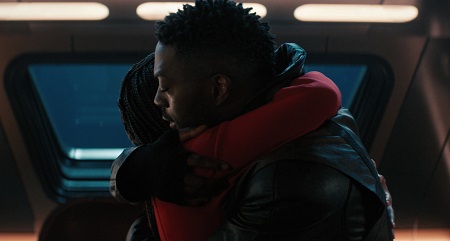
This theory was one that I was desperately hoping would make it to screen! In short, the “Burnham relationship drama” angle that Season 4 pursued from shortly after the halfway point was one of the weakest narrative elements, one which felt gratuitous and overdone. I understand where it came from, and how it aimed to show how grief was leading Book down a dark path. But after everything Captain Burnham went through with Ash Tyler, seeing her settled and happy with Book was fantastic – and I greatly disliked how Discovery ripped that away.
The relationship drama storyline also trod on the toes of other potentially interesting stories. Discovery has always been the Michael Burnham show, and expecting that to change in Season 4 was unrealistic, perhaps. But even so, episodes like All In and Rubicon sidelined other stories and other characters to allow more time to be spent on Book and Burnham and the way they were feeling. For me, it was just too much – and one consequence of that was that some potentially-interesting story arcs, like Dr Culber’s mental health struggles, didn’t get as much development as they deserved.
When Book and Burnham reconciled at the end of Coming Home it really felt great – and I hope that their relationship will remain rock-solid for the remainder of the series’ run!
So that theory was confirmed.
Next, let’s run through the theories that were debunked as of the end of Coming Home.
Debunked theory #1:
Unknown Species 10-C is responsible for the galaxy’s dilithium supply running out.
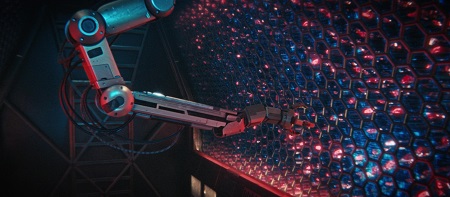
This is the first of several theories that were connected to the events of Season 3. For whatever reason, though, Discovery’s focus shifted far away from the Burn in Season 4, with only a few mentions of the phenomenon and its consequences. The state of the galaxy in the aftermath of the Burn served as a backdrop to the events of the season, but in many ways the story could’ve unfolded in exactly the same way if the Burn had never happened or if we’d never come to know about it!
In short, I speculated that Unknown Species 10-C may have been mining the galaxy for dilithium in a similar way to how they used the DMA to mine for boronite. If so, perhaps they could have been behind the still-unexplained loss of dilithium supplies in the years leading up to the Burn. As it is, there was no connection – or at least, no connection was apparent as of the end of the season.
Debunked theory #2:
The Guardian of Forever will make an appearance.
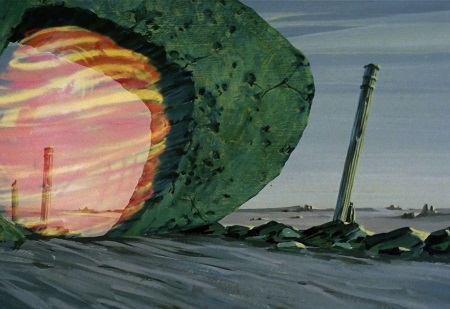
The Guardian of Forever potentially opened up a completely different story trajectory for Burnham – and for Book and Tarka in particular. The events of Terra Firma in Season 3 seem to confirm that the Guardian can be a portal not only to travel through time but also to cross between universes. With Tarka hoping to cross over to a different parallel universe, the Guardian of Forever seemed like a plausible way for him to do so – potentially allowing everyone to get what they wanted.
As it is, Tarka’s story ended in an unspectacular fashion, and unfortunately I consider his storyline to be a bit of a waste. A fun, exciting, and nuanced character was set up earlier in the season, only to turn into a fairly flaccid and one-dimensional villain as the story reached its end. The Guardian of Forever was never mentioned, and Tarka presumably died when Book’s ship exploded.
Debunked theory #3:
Unknown Species 10-C is connected to a faction from Star Trek’s past.

I clung on to my shrinking list of Unknown Species 10-C candidates for the longest time, but I was finally forced to give up on the idea of the mysterious race turning out to be someone familiar a couple of weeks before the season finale! However, even if Unknown Species 10-C were new to Star Trek, I theorised – with very little to back it up, I should say – that there could be some kind of connection to another faction from the franchise’s past.
It couldn’t be the Federation, nor almost any organic race, but it seemed possible to me that there could be a connection to someone like the Borg. If Unknown Species 10-C had been the victim of an attack by someone like the Borg, that could’ve explained their desire to hide away from the rest of the galaxy.
As it is, no connection was forthcoming. I fully expect Unknown Species 10-C to be a minor part of Season 5 (at best), so I doubt we’ll learn much more about them any time soon.
Debunked theory #4:
A major character will be killed.
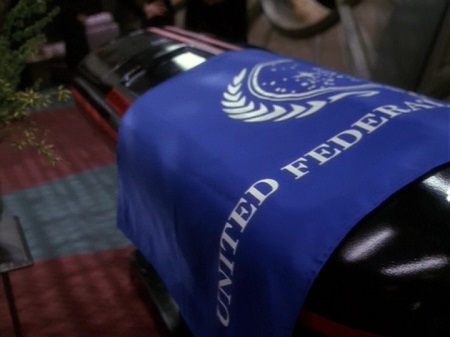
Before the season began I took a look at the main characters and speculated about who may or may not be on the chopping block! As television storytelling has changed and evolved, particularly in the wake of shows with “disposable” casts like The Walking Dead and Game of Thrones, audience expectations have changed as well. I suggested several times throughout the season that Discovery giving its main characters some pretty heavy plot armour in the face of incredibly challenging missions and dangerous circumstances wasn’t a great look – and I kept this theory in play right up until the season’s final moments.
The fake-out over Book’s death wasn’t a problem, and I don’t want to single it out for criticism just because it was the final example of this phenomenon; I felt it worked well in Coming Home. But looking back at the season overall, there were multiple opportunities to kill off characters in meaningful and impactful ways, but Discovery’s writers chose not to. Even minor characters like Dr Pollard and Commander Bryce seem to have survived the season, and while Tarka was killed, as a villain his death doesn’t count in the same way.
A well-timed character death can do so much for a story, and I feel like Discovery dropped the ball on this one during Season 4.
Debunked theory #5:
Admiral Vance’s holo-message about Earth and Ni’Var was fake or has been tampered with.
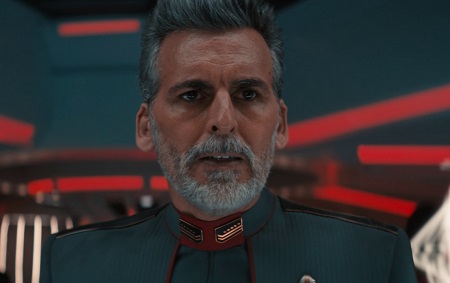
Although Coming Home absolutely stuck the landing and made the sequences at Federation HQ feel incredibly tense and emotional, I didn’t like the whole “Earth is in danger” story cliché that had been introduced in The Galactic Barrier. That trope isn’t just one that’s overused in stories like these, but it’s one that can fall flat and fail in its effort to ramp up the drama, tension, and excitement.
In short, we know in a story about Earth being in danger that Captain Burnham is going to find a way to save the day. If it were literally any other planet – Ni’Var, Qo’noS, Bajor, or wherever – there’d be a real sense of danger that Discovery could’ve repeated the shock of Kwejian’s destruction at the beginning of the season and blown up another planet! But because it was Earth, that never felt like a realistic prospect, and that potentially robbed the story of much of its drama.
I had speculated that someone might’ve faked the message about Earth being in danger, partly because I was hoping it wasn’t true and partly because I was wondering if there might be more going on at Federation HQ. But it turned out that the message was accurate, leading to the scenes at Federation HQ in Coming Home.
Debunked theories #6 & 7:
Unknown Species 10-C built the Galactic Barrier, and
Someone else built the Galactic Barrier to keep Unknown Species 10-C out.
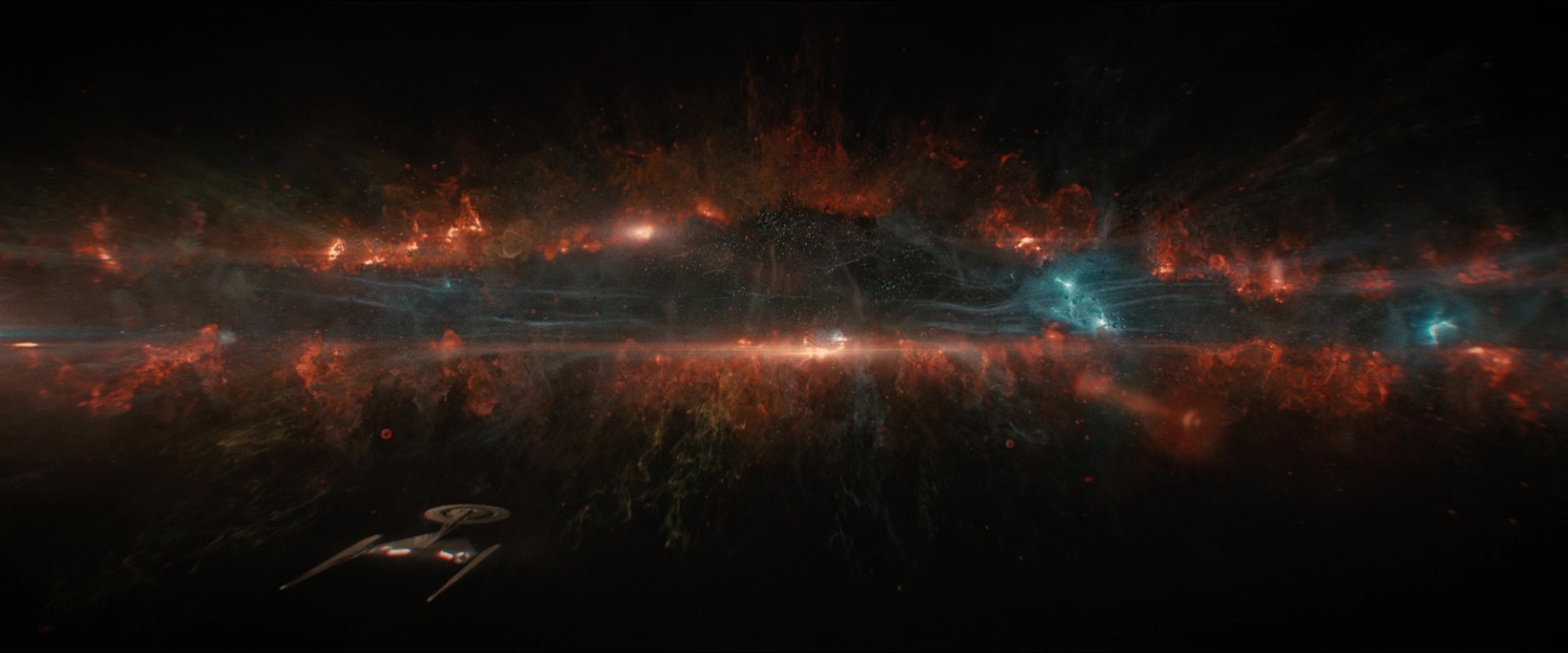
As we headed into the season finale, the Galactic Barrier was definitely fading out of sight, and as a result this theory was already feeling less likely. However, after much had been made of the Barrier earlier in the season, with an entire episode dedicated to crossing it, I wondered if we might learn more about this unusual phenomenon!
The Galactic Barrier had been introduced right at the beginning of The Original Series and had been mentioned on several occasions throughout Star Trek’s history. It served an interesting storytelling purpose, but we didn’t really learn much about it – including how it works or why it exists! There was scope to tie the Barrier’s existence to Unknown Species 10-C; their incredible engineering skills suggested that they could be responsible for its construction. Alternatively, I theorised that someone else might’ve constructed it in the past to prevent Unknown Species 10-C from attacking. Neither theory panned out, and it seems very unlikely we’ll revisit the Galactic Barrier next season, so I don’t expect this one to be picked up any time soon.
It would be interesting to learn more about the Galactic Barrier and where it came from, though.
Debunked theory #8:
There will be a character crossover from a past iteration of Star Trek.
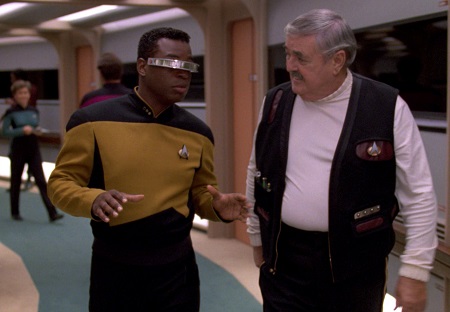
I’ve been sticking to my guns on this theory since well before Season 3, and a couple of years ago I even proposed a shortlist of characters who could still be alive in the 32nd Century. Thanks to technobabble, though, practically anyone from Star Trek could be included if the writers wanted to bring them on board.
There was also the possibility of Captain Burnham unearthing a hologram, recording, or log left behind by a long-gone character who might be familiar to us as the audience. While this would be less of a “crossover” in the same way, it could still be exceptionally fun.
Unfortunately, it didn’t happen this season. I haven’t given up, though, so you can expect to see this one on my Season 5 theory list!
Debunked theory #9:
Book will find Kyheem and Leto inside the hyperfield.
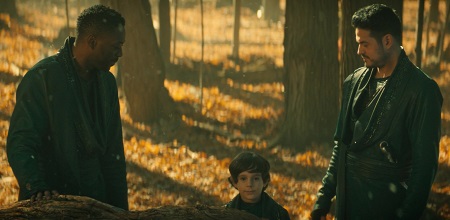
One of my first thoughts about the DMA, long before it had a name and before the season had even aired, was that it could be related somehow to the Nexus from Star Trek: Generations. Then later, when we learned that the DMA had wormhole and transporter capabilities, sending material back to its point of origin, it seemed possible that maybe not everyone on Kwejian was as dead as we first assumed.
Just like Captain Picard was able to encounter Captain Kirk inside the Nexus, I wondered if Book might reach the hyperfield only to discover that Leto, Kyheem, and others from Kwejian had survived the destruction of their planet. It didn’t happen in the end, and in a way that’s a good thing because it would’ve undermined the powerful moment Book had when he spoke to Unknown Species 10-C and took them to task for their destruction.
Debunked theory #10:
Season 4 will connect with the Short Treks episode Calypso.
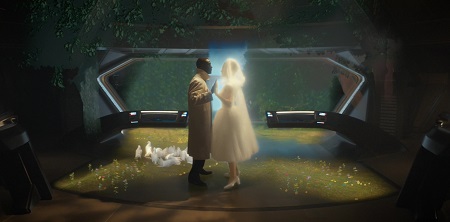
Is Calypso destined to remain forever out of reach? After Seasons 3 and 4 both seemed to move toward a potential tie-in with the Short Treks outlier, once again the story came to an end with no connection in sight. While things like Zora’s development definitely tie in with the events of Calypso, other things, like the retrofit the ship went through in Season 3, have actually moved us away from the events of that short episode.
This is a tough one. I strongly suspect that Calypso was created at a time when Season 2 had a different ending – perhaps even as a kind of “epilogue” in the event of the whole series being cancelled. Its story of the ship being abandoned for a thousand years and an AI developing sentience from the ship’s computer feel quite far-removed from the stories told in Seasons 3 and 4, and realistically, unless a multi-episode arc can be written to bring Discovery and Calypso together, it may be destined to remain unresolved.
Debunked theory #11:
We haven’t seen the last of the Abronians.

It’s a bit of a surprise to me that the Abronians – a race rescued from cryo-sleep by Captain Burnham, Tilly, and Dr Gabrielle Burnham in the episode Choose To Live – didn’t return later in the season. There were several different ways that they could’ve been included, even if they didn’t tie in with the main Unknown Species 10-C story.
Discovery doesn’t usually like to do wholly standalone side-stories like this, so all season long I was half-expecting to see the Abronians make a reappearance! Perhaps we’d learn that their homeworld had been destroyed by the DMA, or maybe they could’ve arrived to assist the Federation in an hour of need. Their massive planetoid-sized ship could’ve been incredibly useful during the evacuation of Earth and Ni’Var, for instance.
Debunked theory #12:
Tarka will create his own DMA.
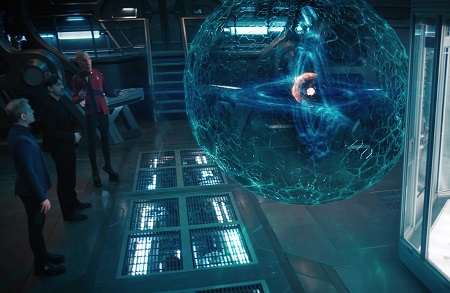
If Tarka had been unable to find the DMA’s power source inside the hyperfield, I wondered if he’d resort to building his own DMA. We saw as far back as The Examples that he understood the basic principles involved and had been able to build a scale model. I speculated that maybe he would go on to build his own version.
This theory originally began when Tarka was on my list of suspects for creating the original DMA. That didn’t pan out, of course, but even going into the season finale it still seemed possible that he might try to build his own version of it.
Debunked theory #13:
Kayalise is the Kelvin universe.
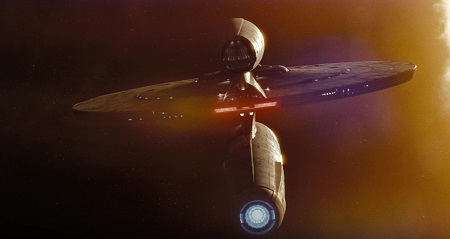
In the weeks ahead I’d like to take a look at Ruon Tarka’s story in a bit more detail, as I feel that it started very strongly but went off the rails toward the end. For now, suffice to say that it’s disappointing that we didn’t learn more about Kayalise – the alternate universe that Tarka hoped to travel to.
I speculated that Kayalise could be the Kelvin timeline – it’s one of the only other parallel universes that we know of in Star Trek, it stands to reason that the Burn didn’t happen there, and Discovery had already dropped a Kelvin-timeline reference in Season 3. It could’ve been interesting to follow Tarka across the divide between universes… but it didn’t happen.
Debunked theory #14:
Oros is alive – and we’ll see him soon!

Oros was a fun and interesting character, and it’s such a shame we only got to see him for a few flashback sequences in a single episode. There was scope to follow more of his story, and if Tarka’s storyline had ended in a more satisfying manner, a meet-up could’ve been on the cards.
I speculated that Tarka would successfully use his interdimensional transporter, or that a compromise could be found to allow him passage to Kayalise, and that he’d be able to reunite with his long-lost friend.
Overall, Oros’ inclusion in the story was an odd one. I feel that we were teased unnecessarily by the show keeping his name hidden for several episodes, and that encouraged speculation that this character might’ve been someone we’re already familiar with. For the heavily-teased character to make a single appearance and then never return was strange – and a bit of a let-down.
Debunked theory #15:
The interdimensional transporter works!
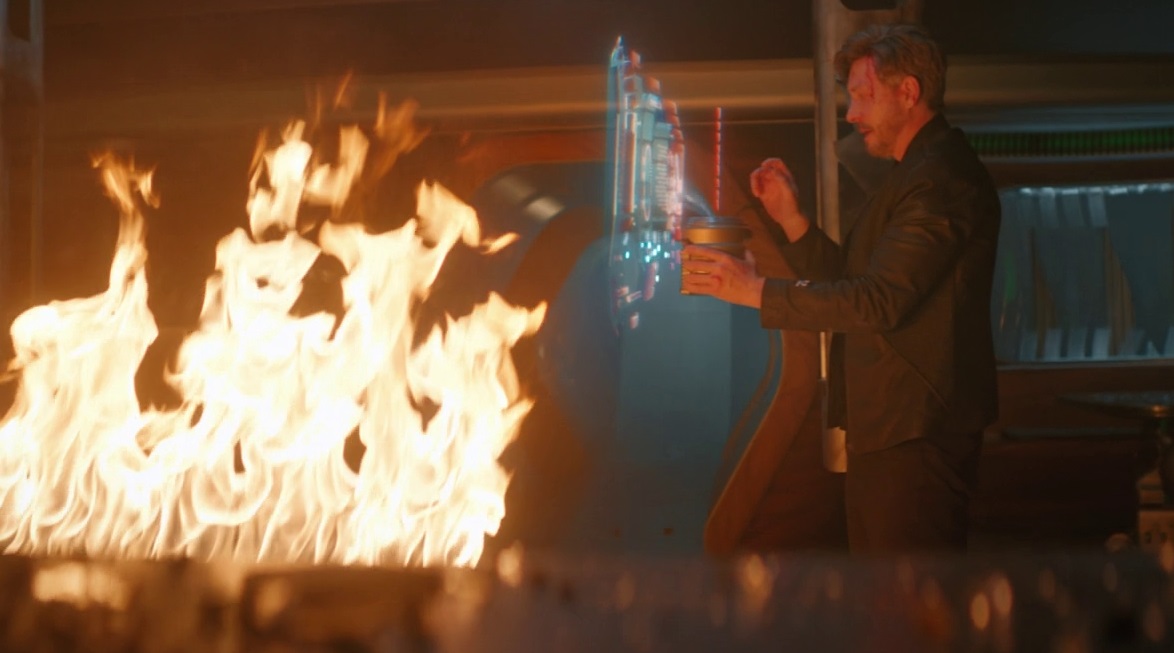
Though it was left somewhat ambiguous as Book’s ship met an explosive end, it seems pretty clear to me that the interdimensional transporter won’t be making a return to Star Trek anytime soon! Tarka held onto hope for the longest time that not only would his own model work, but that Oros’ original interdimensional transporter had as well.
There was scope, had the season ended in a different way, for the interdimensional transporter to be useful for Captain Burnham, too. If Unknown Species 10-C were native to a different dimension, for example, that could’ve been a way to tie the two halves of the story together. In a season that was all about diplomacy, compromise, and finding a middle ground, Captain Burnham could’ve traded with Tarka for the technology, and that’s just one example.
As it is, it seems like we’ll never know whether the interdimensional transporter even worked at all.
Debunked theory #16:
Michael Burnham won’t remain in command of the USS Discovery.
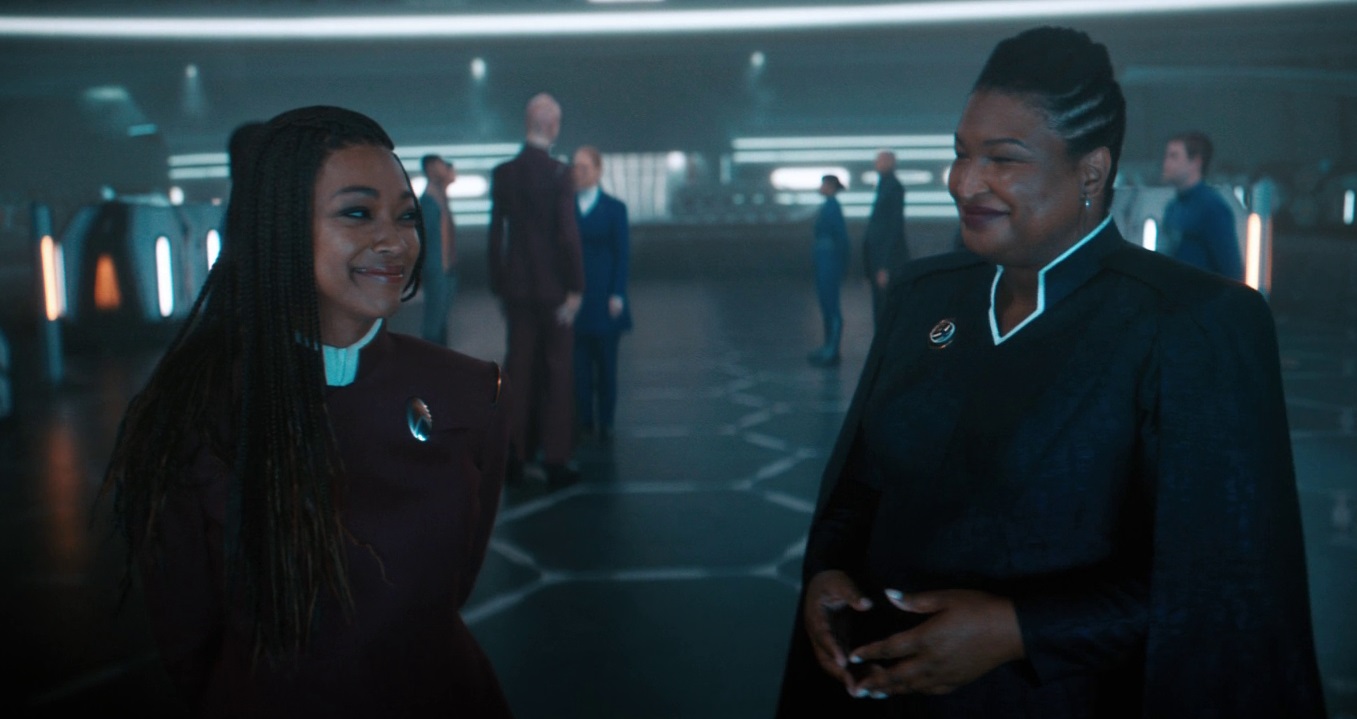
In short, I speculated that Discovery’s trend of having a different captain for every season might continue, and that the season could end with Captain Burnham either leaving Starfleet to be with Book, or accepting a new role within the organisation. To be clear, because I know there’s a lot of debate any time Captain Burnham is mentioned: I wasn’t in favour of this theory necessarily. I just thought it was a possibility, and a potentially interesting one at that!
In the end, the season drew to a close with Captain Burnham still in command, ready to tackle the next mission as the Federation continues to rebuild. And that was a great way for things to end!
So those theories were debunked!
There are a handful of theories that were connected to events in Season 3 that I also kept on the list this time, and none of those were really touched on at all. In addition, there are a couple of theories that I introduced in Season 4 that I still consider plausible for future seasons or stories. We’ll take a look at those briefly now.
Theory #1:
Saru will assume command of the USS Voyager-J.

The captaincy of the USS Voyager-J – seemingly the Federation’s new flagship – was discussed as the season drew to a close. President Rillak, who had determined Captain Burnham to be unsuitable for the role in the season premiere, changed her mind after the mission to Unknown Species 10-C’s hyperfield.
I had suggested that Saru embodies many of the qualities that President Rillak was looking for in a captain for the Voyager-J, and that he might assume command of the ship at the end of the season. There’s also the question of how Saru, who holds the rank of captain, will fit in with the command structure aboard the USS Discovery going forward; his presence as Captain Burnham’s XO this season was implied to be temporary.
Whether Saru has a major role to play in Season 5 or not, I’m keeping this one on the list at least for now.
Theory #2:
Who is Dr Kovich, and what is his role within the Federation hierarchy?
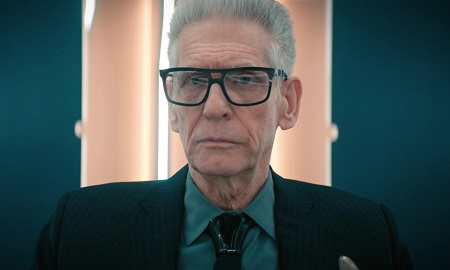
I’m beginning to feel that Dr Kovich is seen by the show’s writers as a bit of a joke; a character who we’ve been teased with, but whose interesting-sounding lines and suggestions never go anywhere. The most egregious example of this has to be his line in The Galactic Barrier, where he spoke of having “more important things” to do than accompany the USS Discovery. What were those important things? The show never bothered to tell us.
Going all the way back to his first appearance in Season 3, Dr Kovich has been intriguing. Is he a Section 31 operative? The Federation Vice-President? Admiral Vance’s boss? We don’t know, and while Dr Kovich has occupied several different roles this season – counsellor, Starfleet Academy instructor, diplomat, etc. – we still don’t know who he is or what he’s all about.
I’d like to hope we’ll learn more about him in Season 5!
Theories #3 & 4:
We’ll learn more about the ban on time travel, and
Has the Federation violated the ban on time travel?
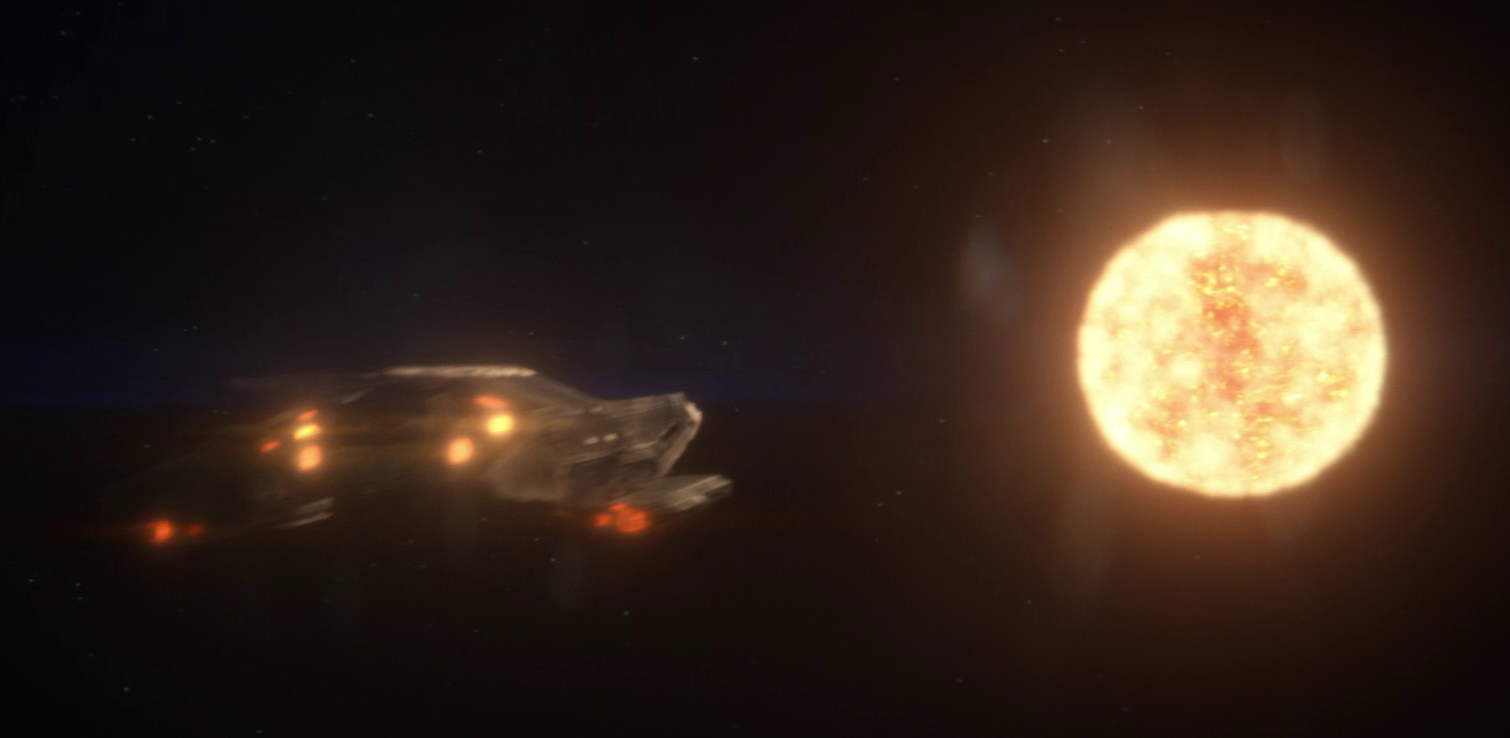
The ban on time travel was introduced in Season 3, and there were narrative reasons for its inclusion. However, as I’ve said ever since we first learned about it: such a ban would be incredibly difficult to implement and enforce. I’d love to know more about how it works, how it’s enforced, and who’s responsible for preventing basically anyone with a starship from doing something like the “slingshot method.”
I also think it’s possible that the Federation itself (or perhaps an organisation like Section 31) has chosen to ignore the ban when it suited them, and again I’d be curious to learn if someone like President Rillak or Dr Kovich had greenlit some kind of time travel escapade.
Theory #5:
The USS Discovery will have to defend the Verubin Nebula.
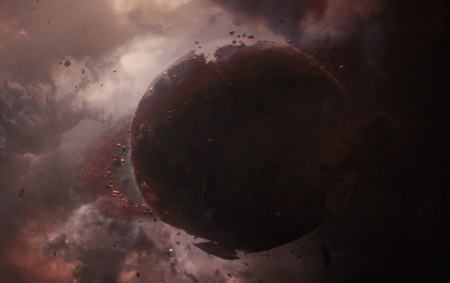
The Verubin Nebula is the galaxy’s only major source of dilithium (at least, as of the end of Season 3). With the Federation in control of this incredibly valuable resource, it stands to reason that other, more aggressive powers might seek to take it from them. Even if the Federation is willing to share its bounty with everyone, factions such as the Borg Collective, the Dominion, or the Klingon Empire may not be satisfied and may want to control the Verubin Nebula for themselves.
I speculated prior to Season 4 that the USS Discovery may be called into action to defend the Verubin Nebula from such an attack – and even though it didn’t happen this time, it’s still a possibility for Season 5!
Theory #6:
Some areas of the galaxy, such as the Delta Quadrant, avoided the worst effects of the Burn.
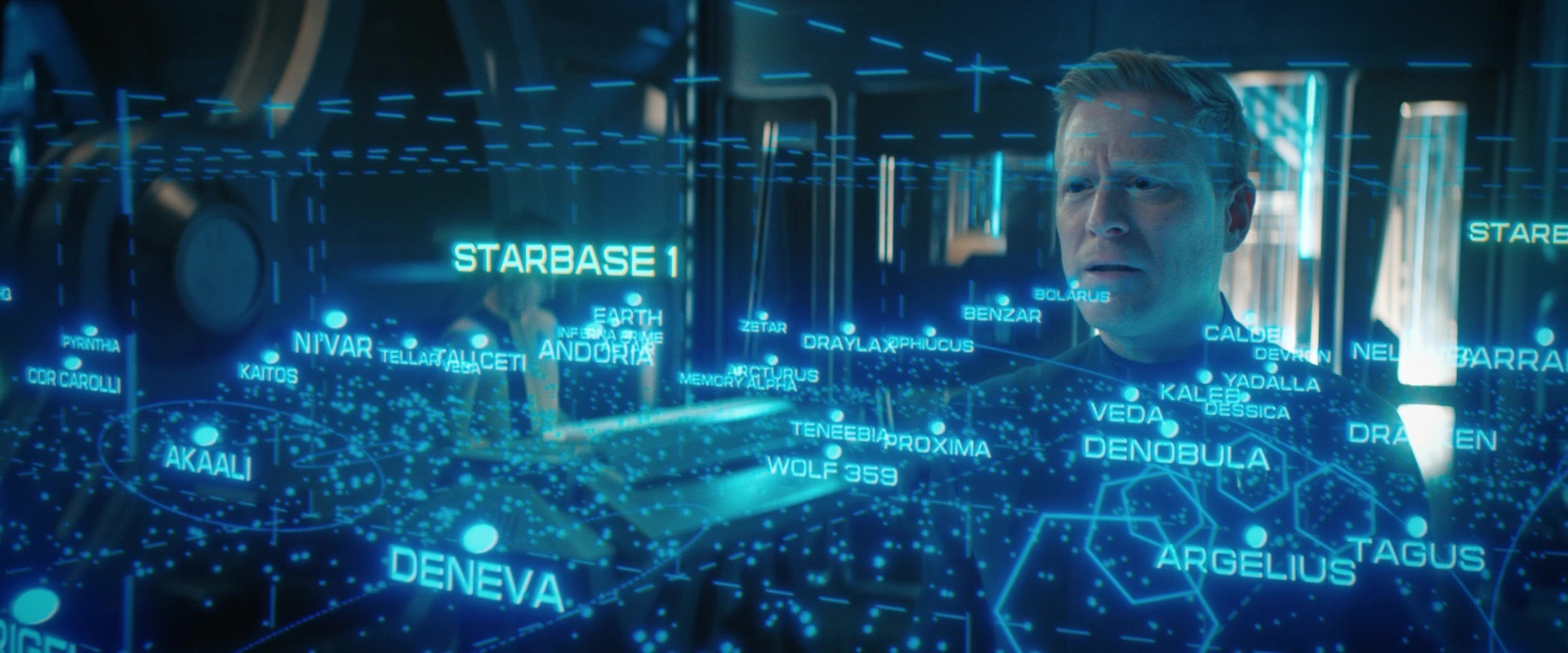
The Burn was mentioned in Season 4, but never came to the fore in a major way. We still don’t know how far its impact reached, and what effects the Burn had on far-flung parts of the galaxy far away from the Verubin Nebula.
I speculated that some regions of the galaxy may have avoided the worst of the Burn, and maybe some areas didn’t even feel it at all. It could be very interesting to learn that a faction such as the Borg – who were mentioned in Discovery for the first time near the end of Season 4 – were unaffected. They might’ve been able to spend the last hundred years building up their forces for a major invasion!
Check out a full write-up of this theory by clicking or tapping here.
So those theories may return!
Finally, we had three production-side theories on the list as the season finale approached, and I’d like to take a look at those before we wrap things up.
Production-side theory #1:
The season will end on a cliffhanger.

This one is officially debunked! As the finale got closer and closer with seemingly a lot of different narrative threads still in play, I wondered if the season might’ve ended on a cliffhanger, with the story to be resumed in Season 5. It didn’t happen, though, and while not every storyline was brought to the perfect ending from my point of view, all of the main narrative threads were tied up by the time the credits rolled.
Star Trek has a history of season-ending cliffhangers, so this didn’t feel too far-fetched! Still, it will be nice to have a clean slate going into Season 5.
Production-side theory #2:
Tilly’s departure will be permanent.

This is still officially unconfirmed at time of writing. We don’t yet know whether Mary Wiseman will be returning in Season 5, and if she does return, whether she’ll be doing so as a main cast member or just making a cameo or guest appearance.
It was nice to have Tilly back for the scenes at Federation HQ in Coming Home, and I’m glad we got to spend a little more time with her. However, to me her decision in All Is Possible felt permanent, and taking up a new role at Starfleet Academy feels like a good fit for her. Undoing that development, and unravelling that interesting and fitting character arc, wouldn’t be my preference.
There’s also the possibility that the rumoured Starfleet Academy series could bring back Tilly in a major role. Either way, we’ll have to wait and see!
Production-side theory #3:
There will be a crossover of some kind with Picard Season 2.
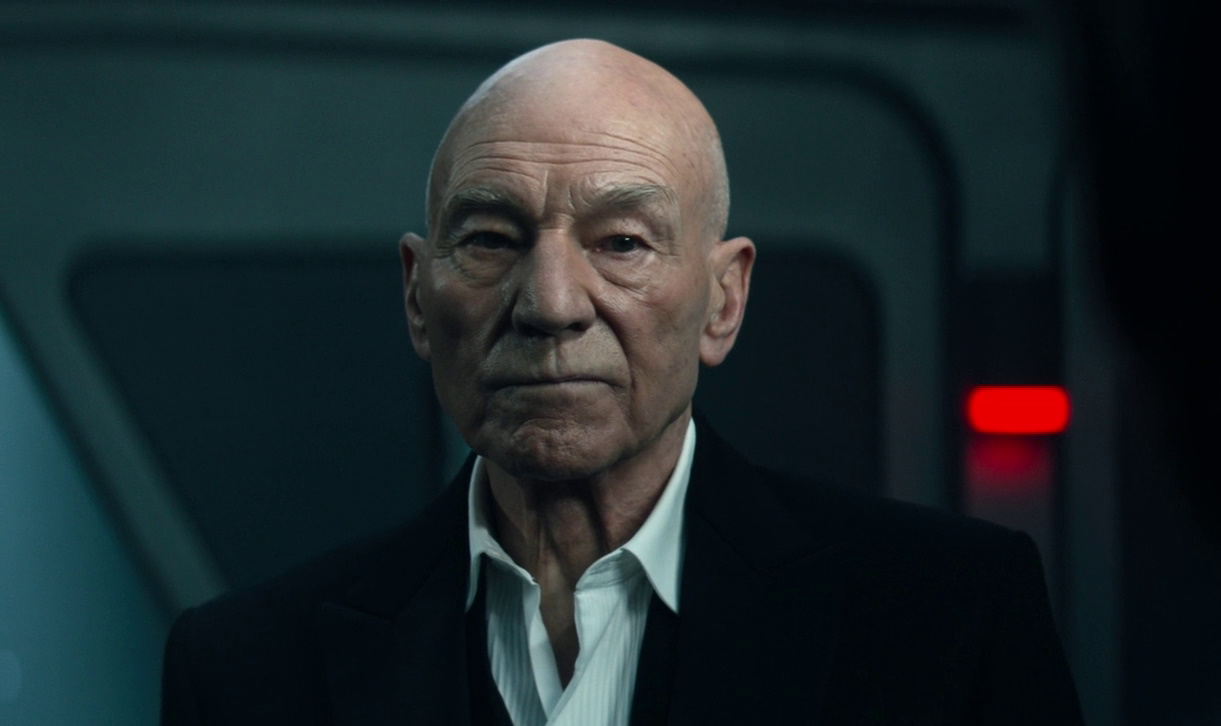
As you’ll know by now if you’ve watched both shows, no crossover between Picard and Discovery was forthcoming. This theory arose because Picard Season 2 and Discovery Season 4 overlapped one another by three weeks – something that I genuinely cannot explain. Paramount Global consistently makes these random, illogical decisions, and while it was fun to speculate about what a Picard-Discovery crossover could look like… now that the dust has settled I genuinely do not understand why it had to happen this way. Is it something to do with the fiscal year?
Given that Paramount+ remains unavailable in most of the world, and that Strange New Worlds’ premiere is now imminent, the scheduling makes even less sense. Delaying Picard’s second season by a measly three weeks would’ve bought a little more time for Paramount+ to be ready. Three weeks may not have made all the difference, but combine it with a short delay to Strange New Worlds and maybe it would’ve been possible for more Trekkies to watch the new series together.
I’m not disappointed that a crossover didn’t happen – though that could’ve been a lot of fun. But I am disappointed in Paramount and the inept way they’re handling the Star Trek franchise.
So that’s it!
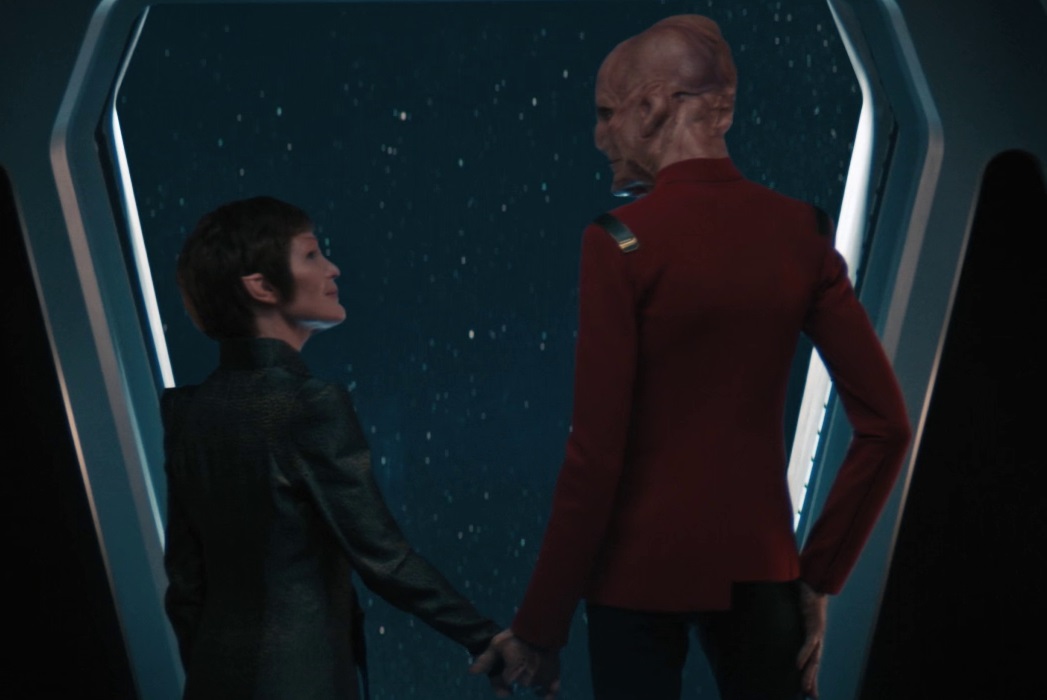
Thank you for sticking with me through Star Trek: Discovery Season 4. As the season wore on I did get some things right with my theories, even if some of my bigger ones – like the identity of Unknown Species 10-C – were wide of the mark.
Discovery Season 4 began in a truly awful corporate mess, with Paramount paying money out of its own pocket to try to take the show away from fans outside of the United States. Even in regions where Paramount+ was available, they originally planned to deny viewers access to Discovery Season 4. While I’m glad that the corporation recognised the backlash from fans and backtracked on those plans, it’s something I haven’t forgotten. With Strange New Worlds now in the same position, it’s clear to me that Paramount Global has learned nothing.
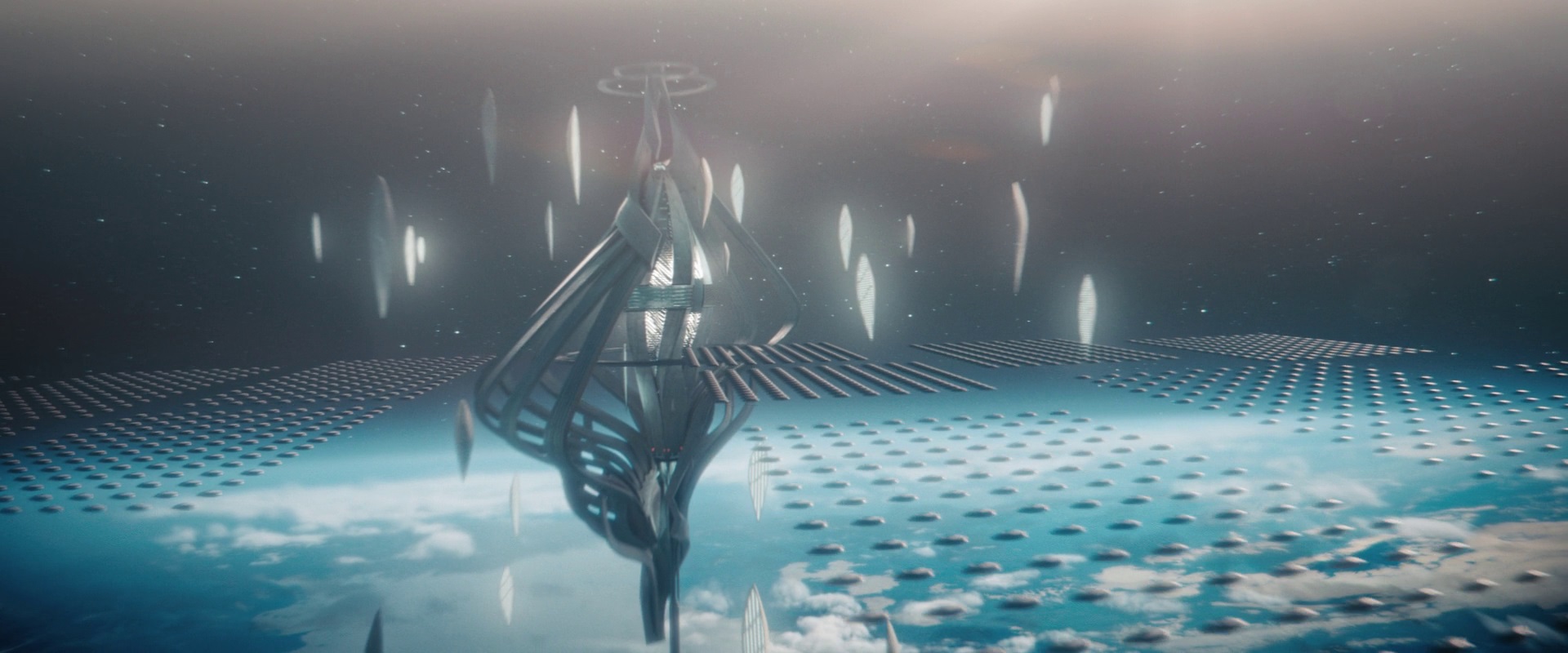
In the weeks ahead I’ll definitely write up a longer retrospective of the season. For now, suffice to say that it was a mixed bag, with some decent episodes and some that dragged. The main storyline – that of the DMA and Unknown Species 10-C – seemed to take a long time to reach its conclusion, feeling padded in places. However, the season finale brought things to a close in a very emotional, entertaining, and enjoyable way. Whatever I may have thought about parts of the ride, the destination in this case was worth the wait.
One final note. I write up these theories for fun! I like Star Trek and I like writing, so writing about Star Trek is an enjoyable endeavour for me. For some folks, though, fan theories can become problematic. It’s always worth trying to keep in mind that any fan theory, no matter how enjoyable and plausible it may seem, isn’t worth getting upset over. Most of the theories I come up with never make it to screen, and usually what unfolds on screen is better! If I ever found that theorising and speculating about Star Trek (or any other franchise) was beginning to harm my enjoyment, I’d stop – and I’d encourage anyone in that position to do the same.
Star Trek: Discovery Season 4 is available to stream now on Paramount+ in the United States, Scandinavia, Latin America, and Australia. The show is available on Pluto TV in the UK, France, Germany, Italy, and other parts of Western Europe. Individual episodes or the full season can be purchased on iTunes, Amazon Video, Google Play, and possibly other platforms in the UK, parts of Europe, and select other countries. The Star Trek franchise – including Discovery and all other properties mentioned above – is the copyright of Paramount Global. This article contains the thoughts and opinions of one person only and is not intended to cause any offence.



